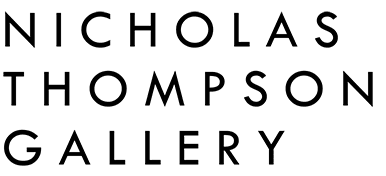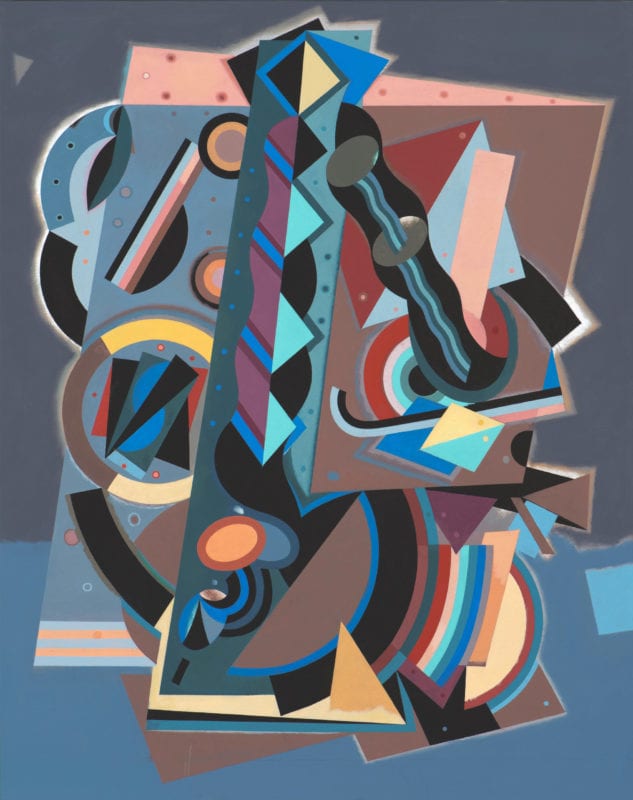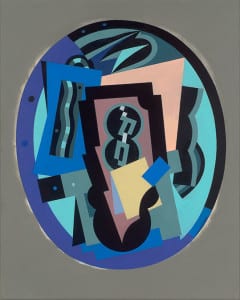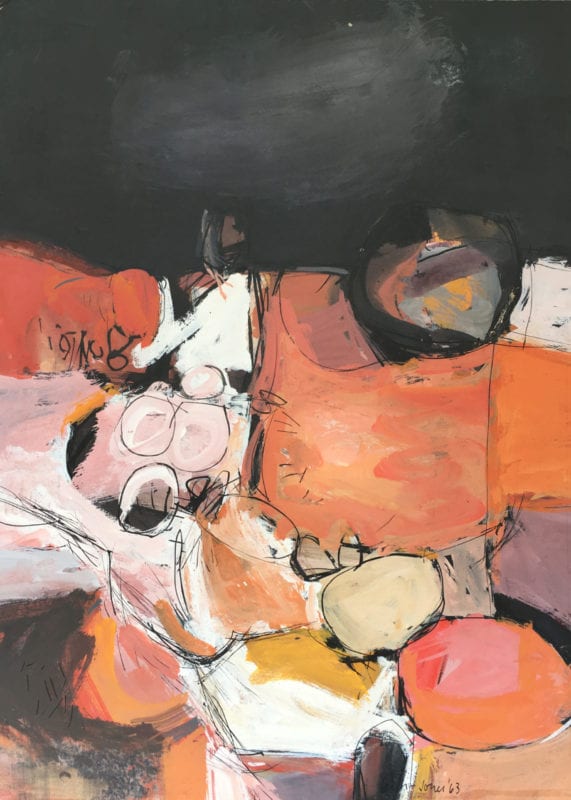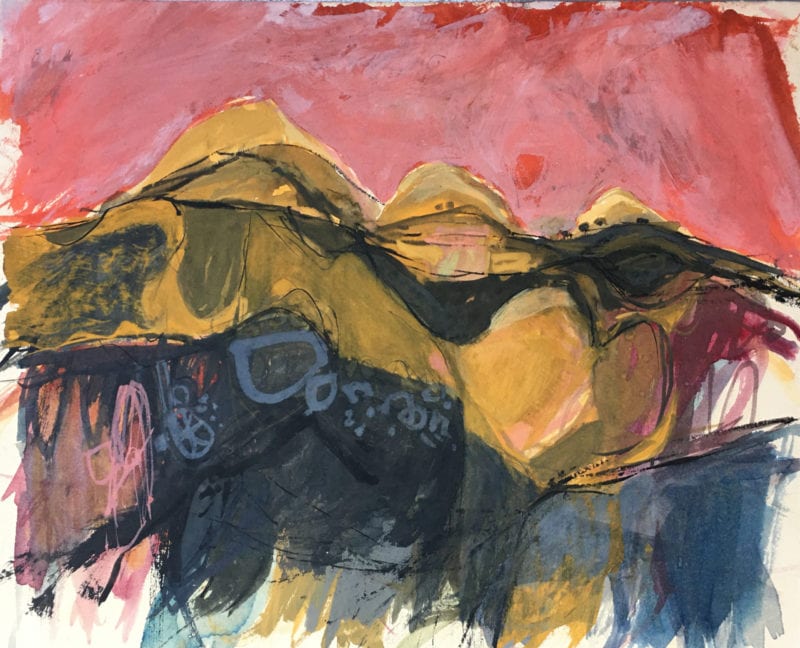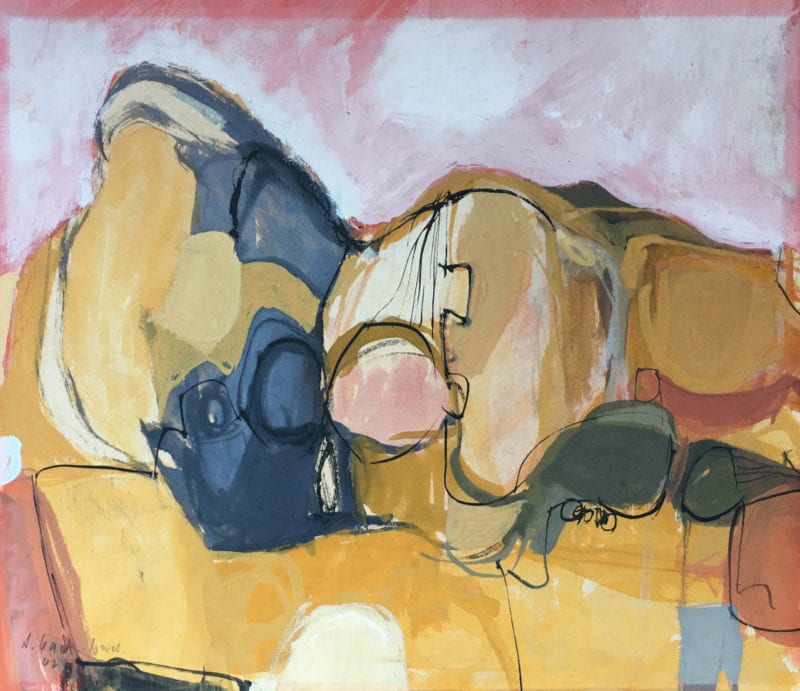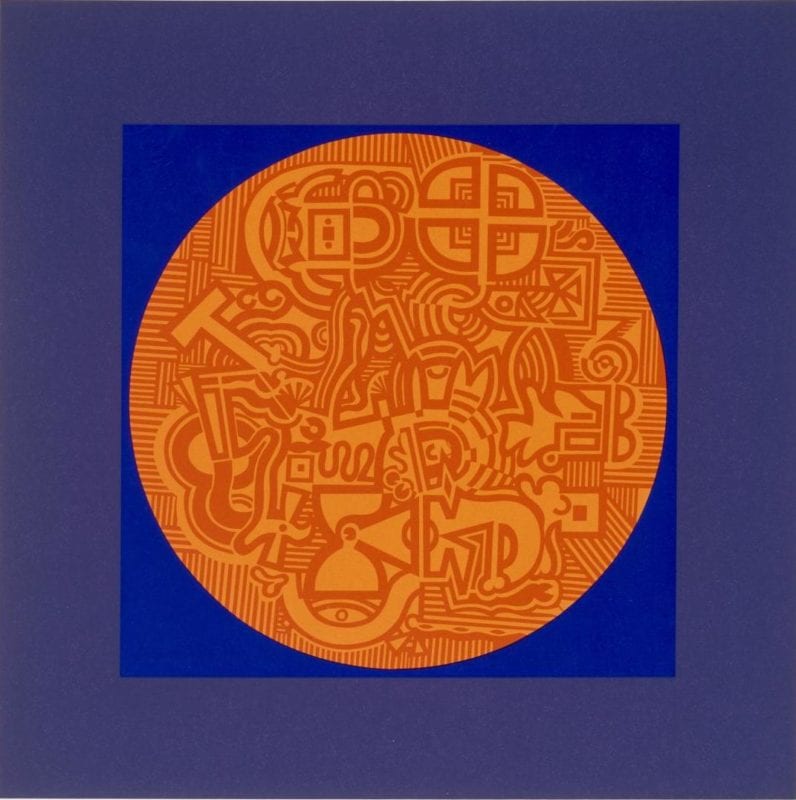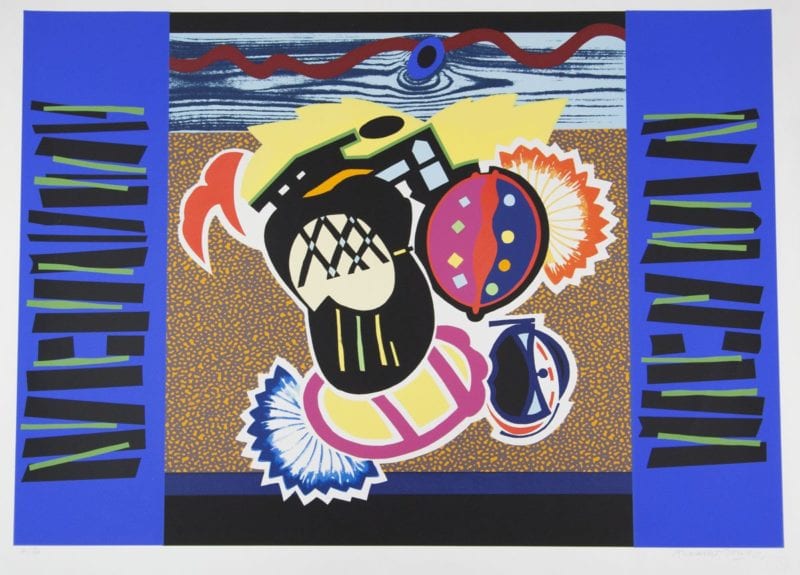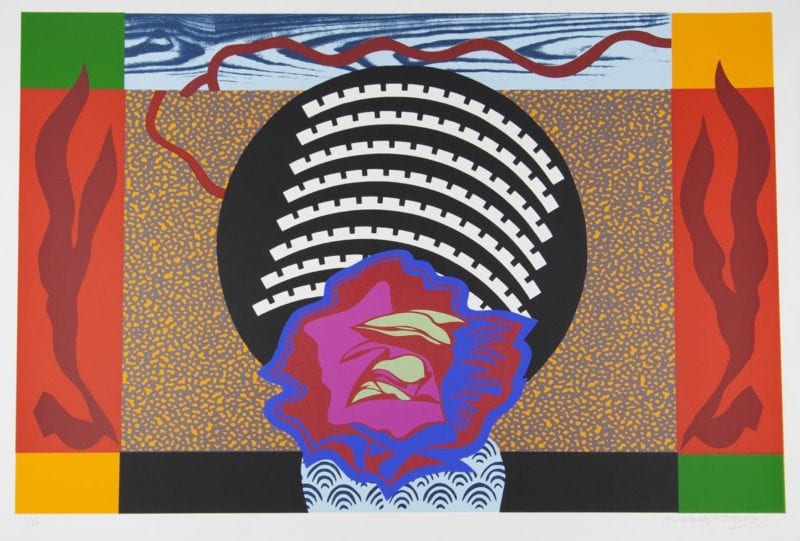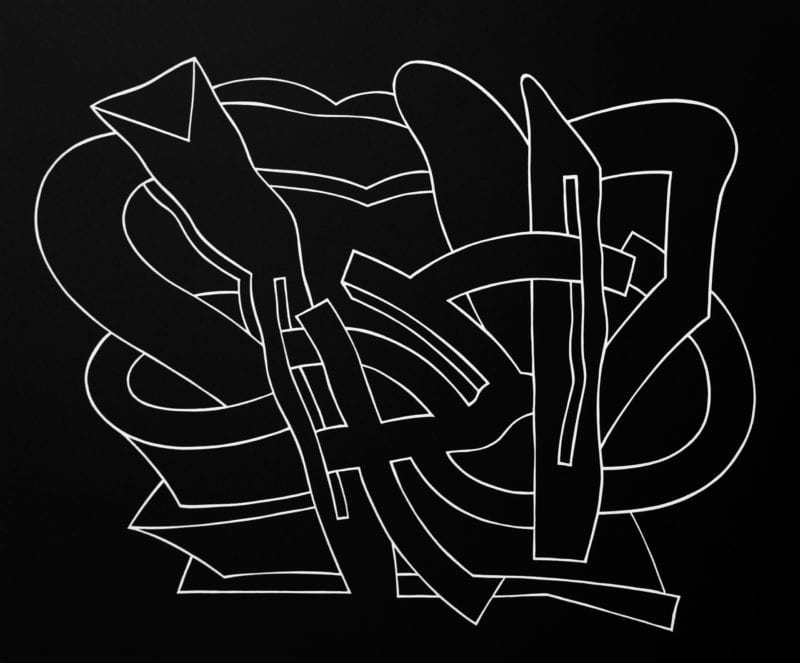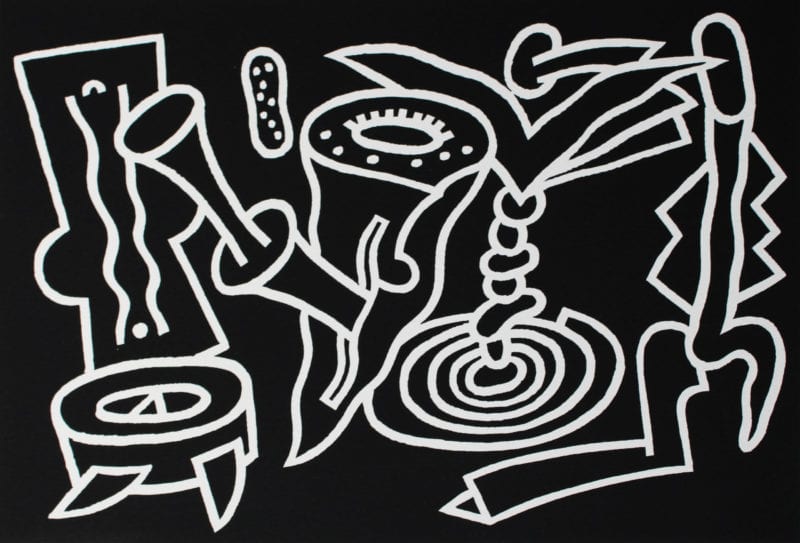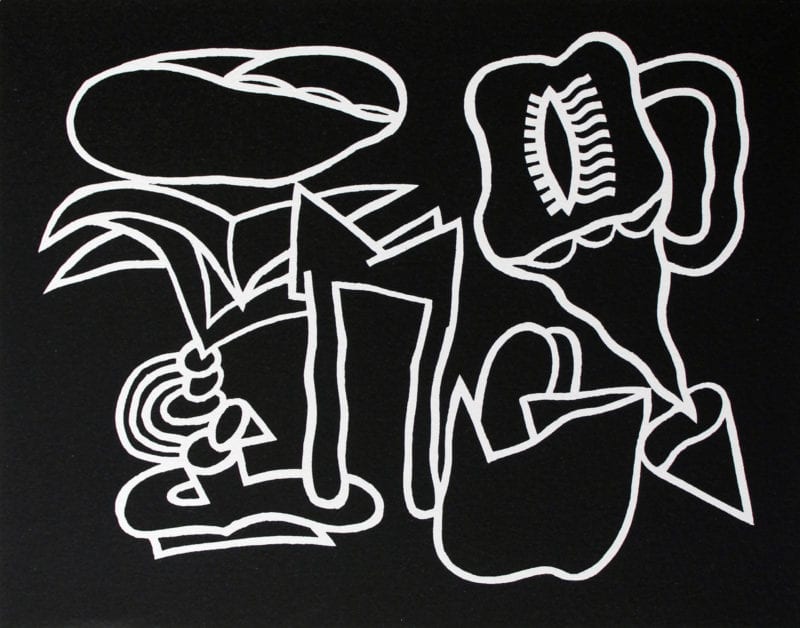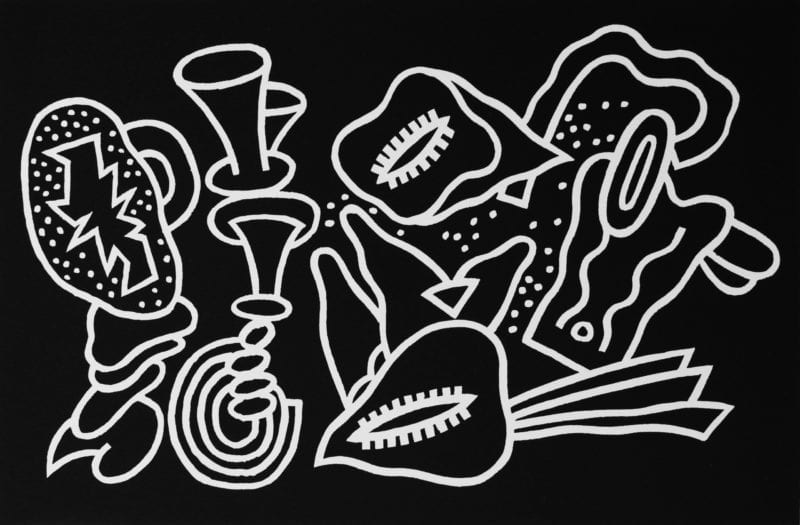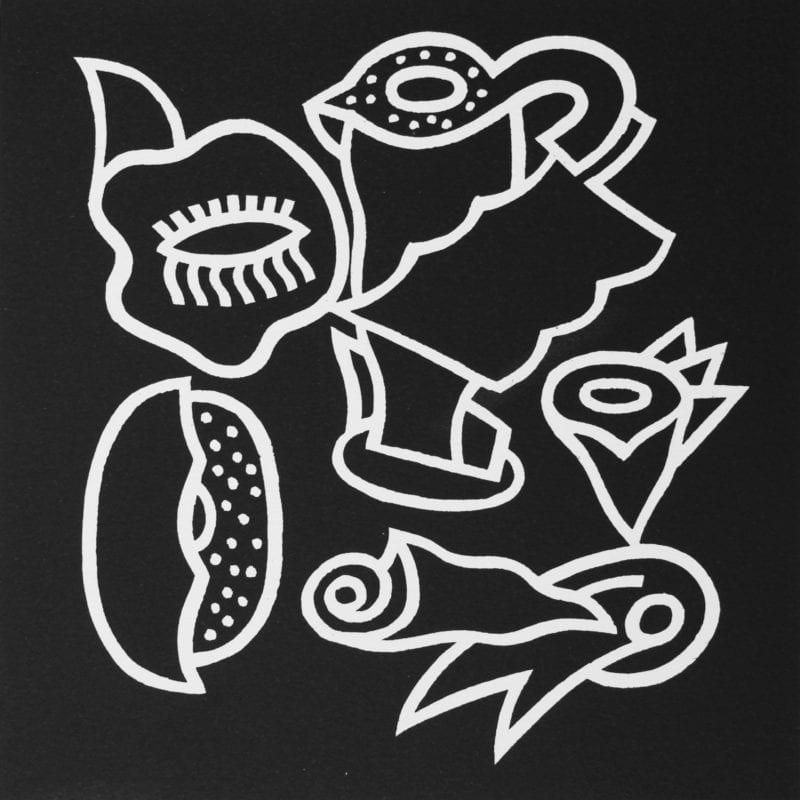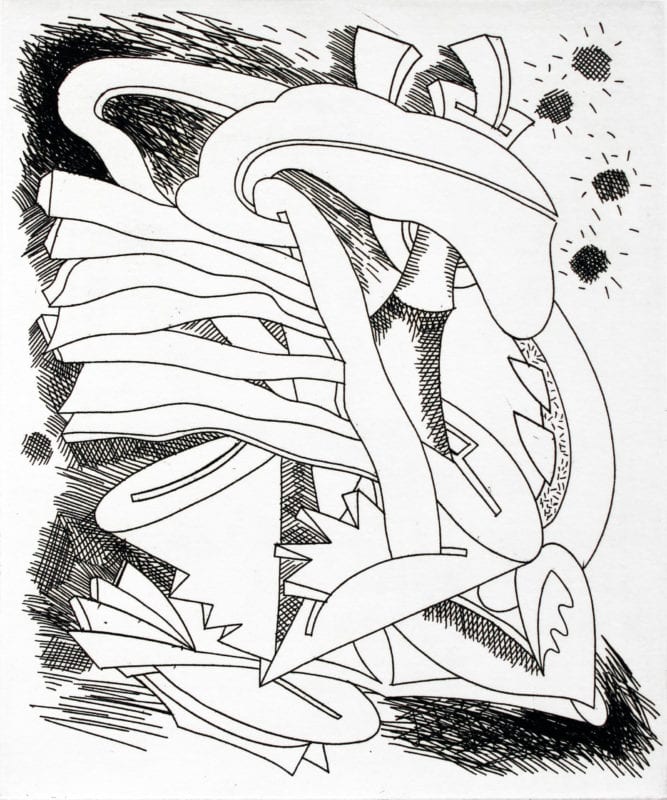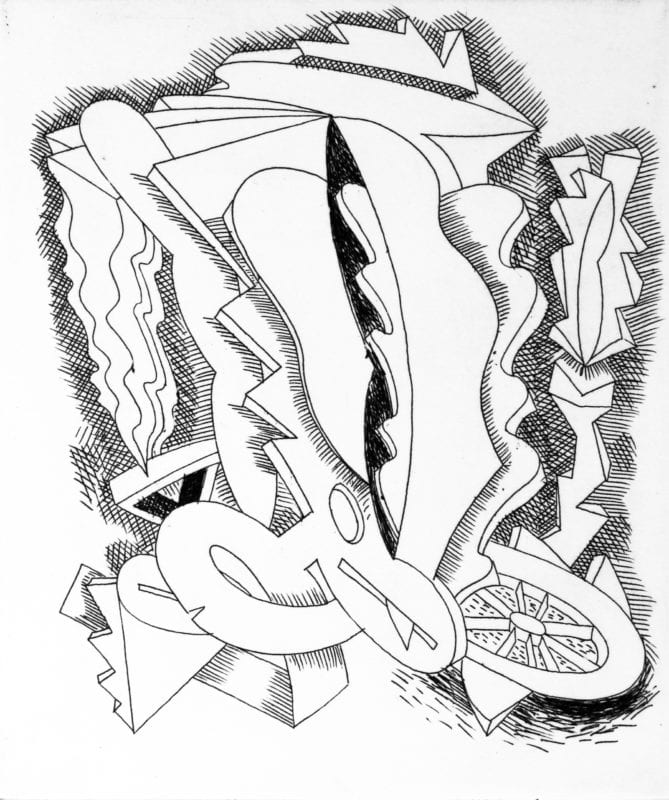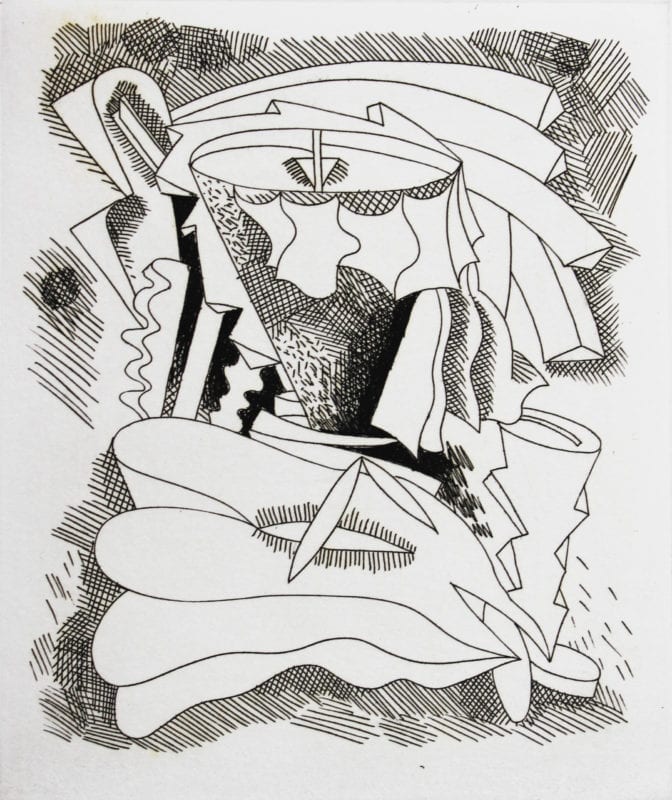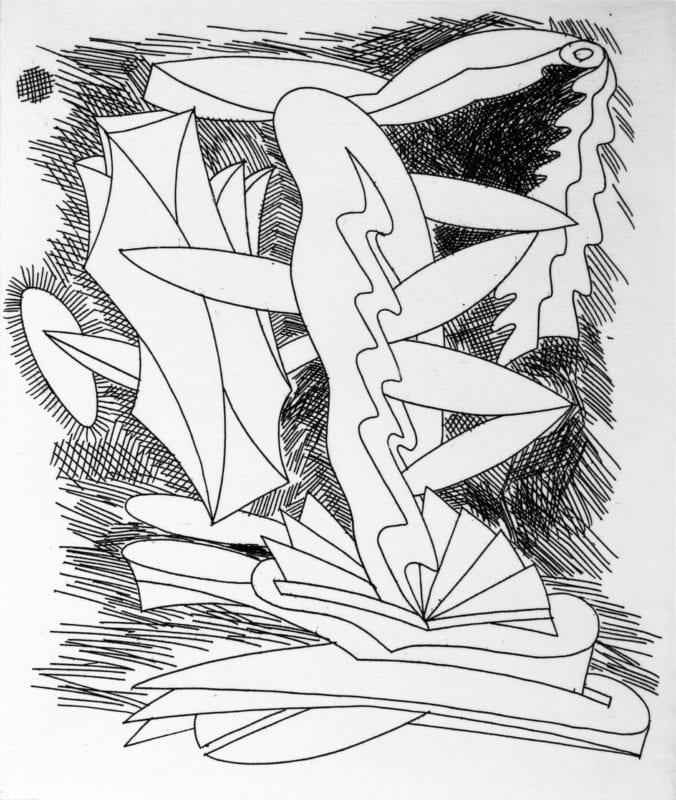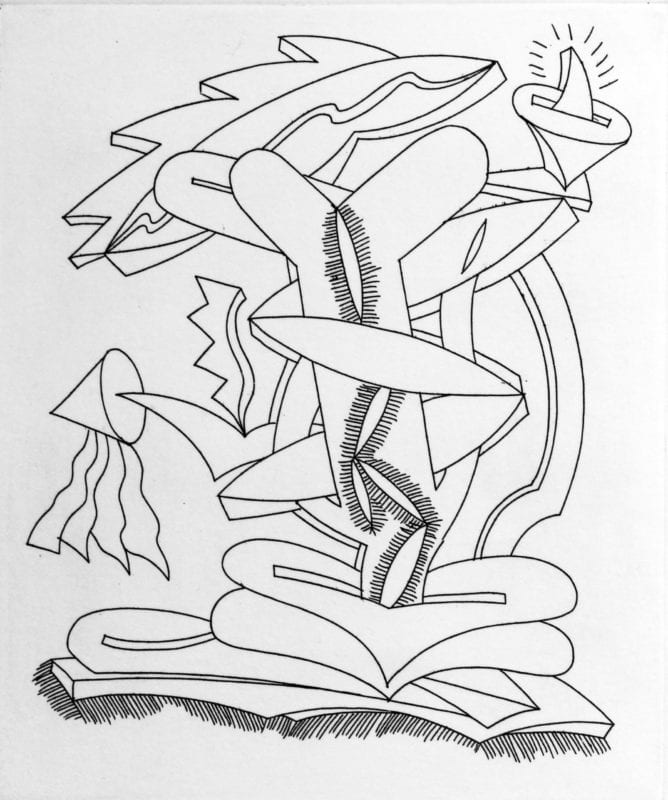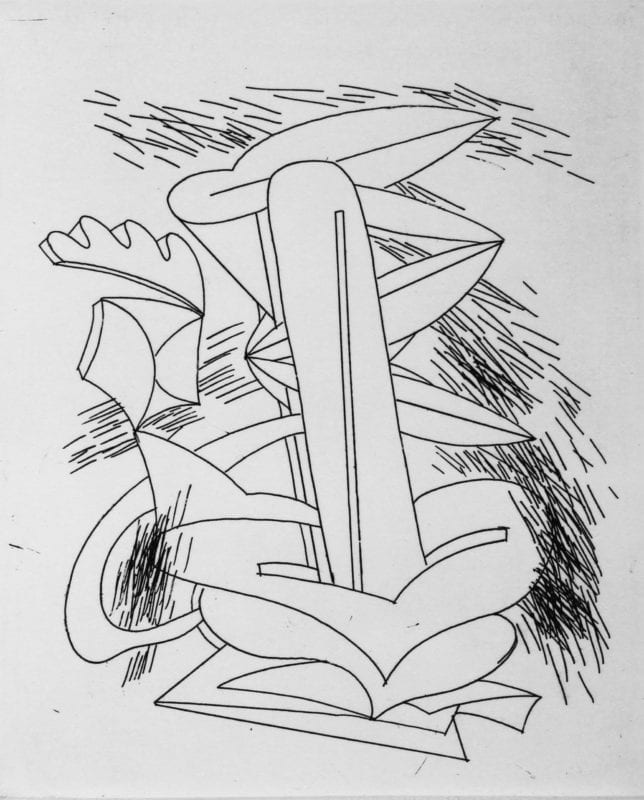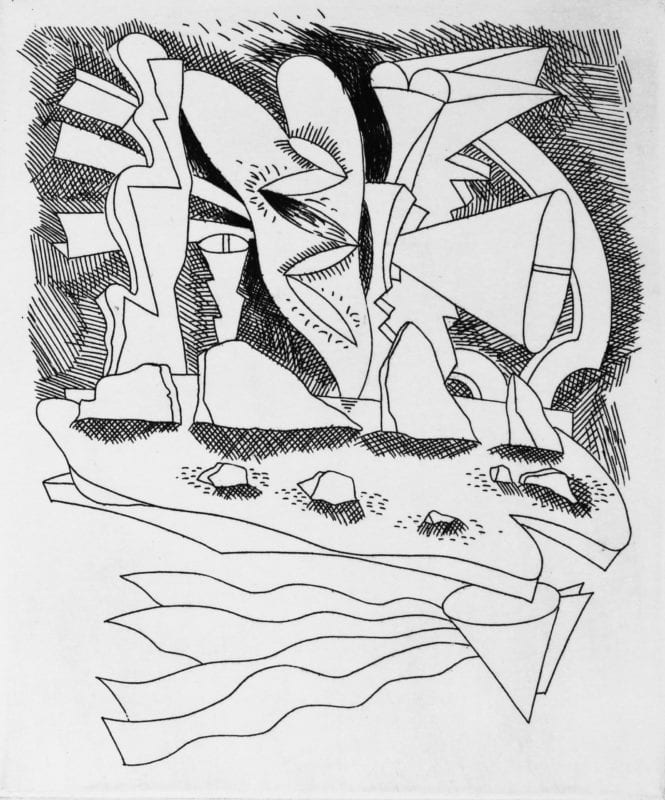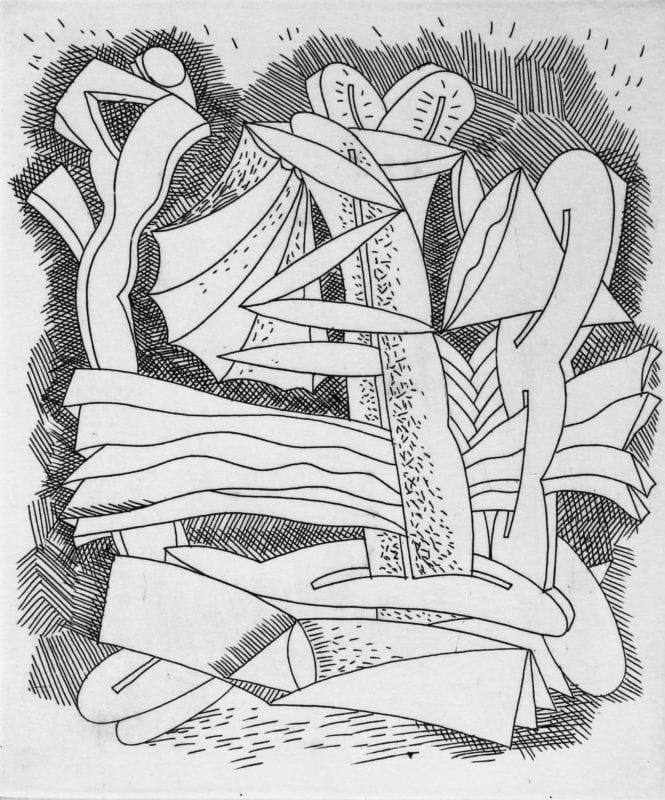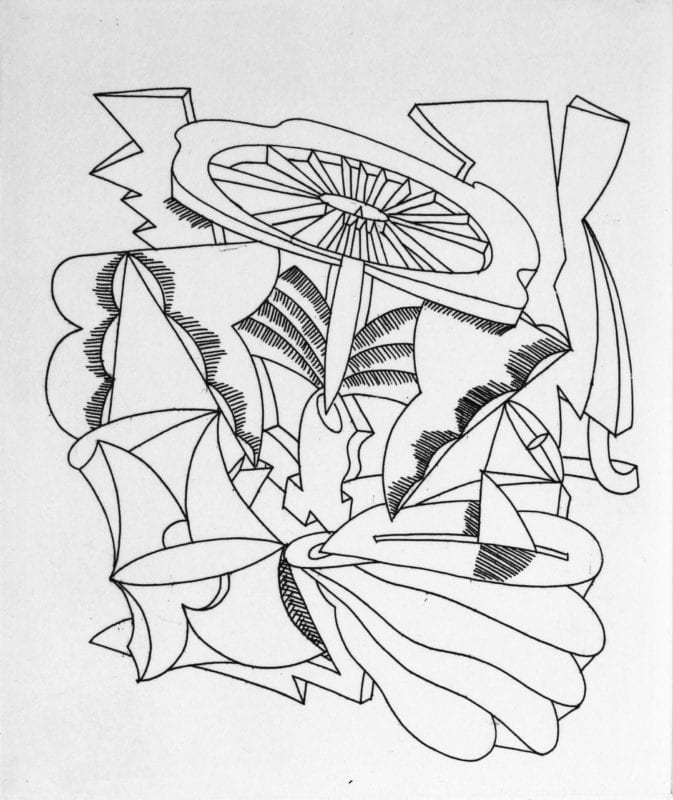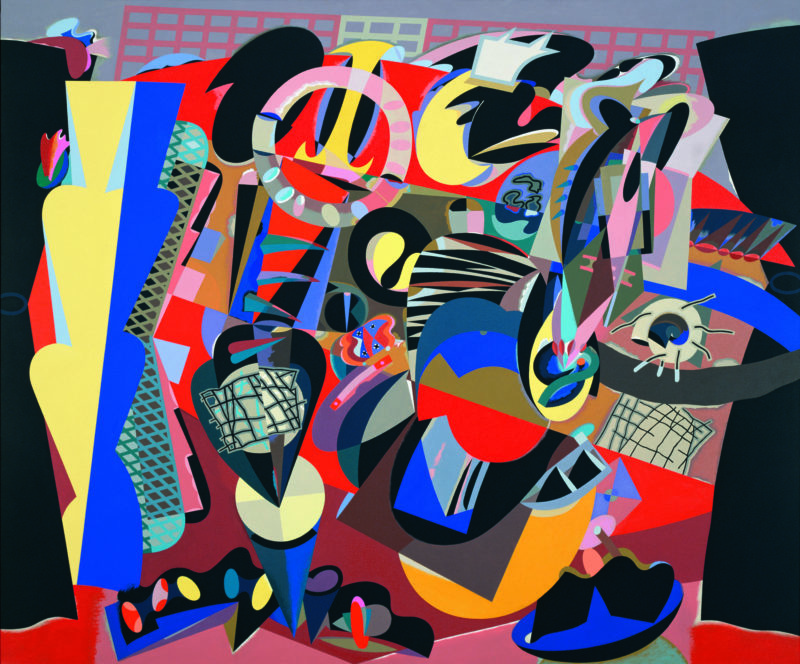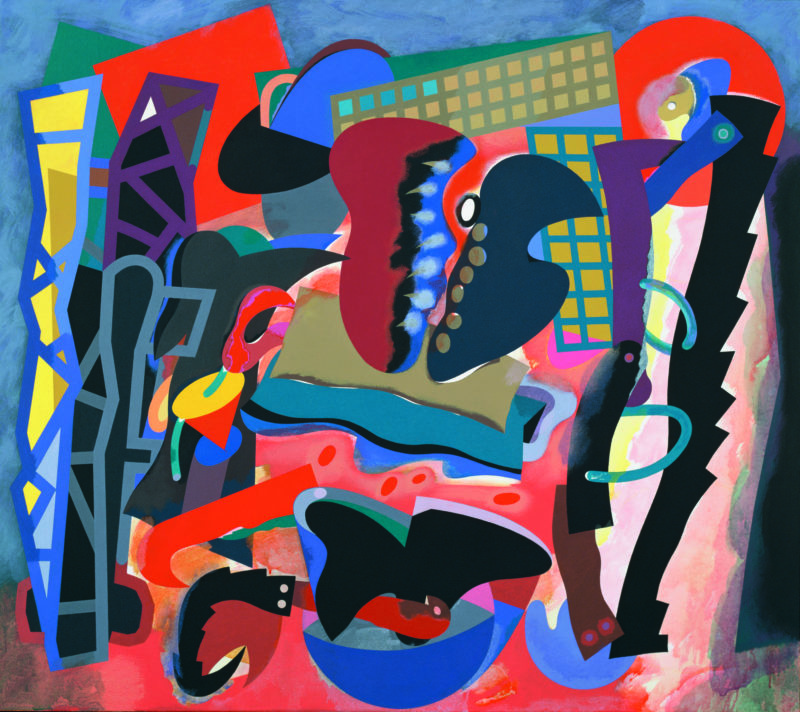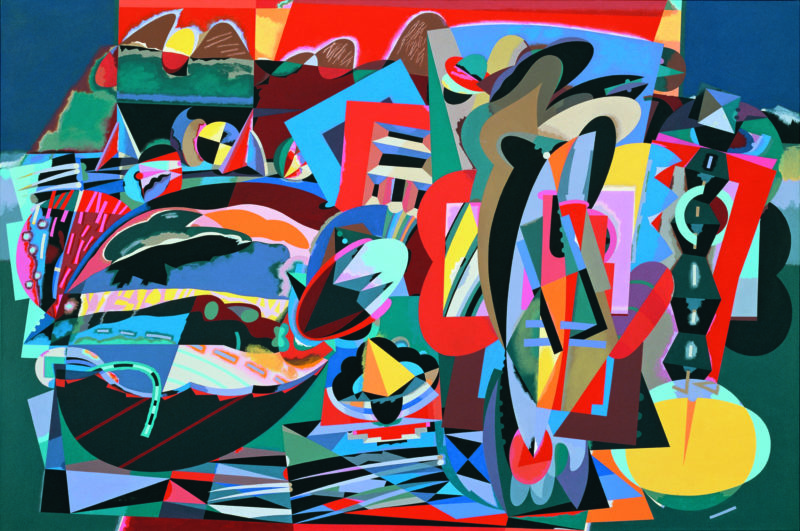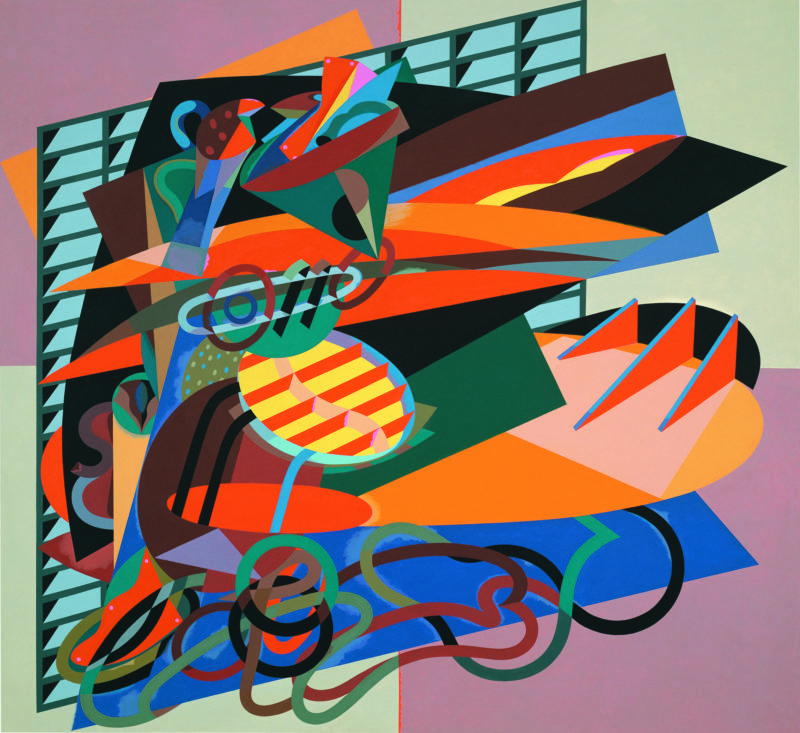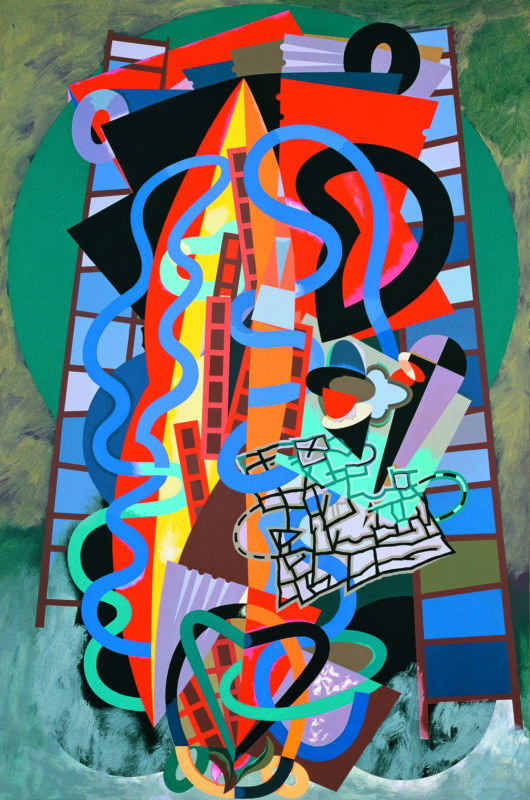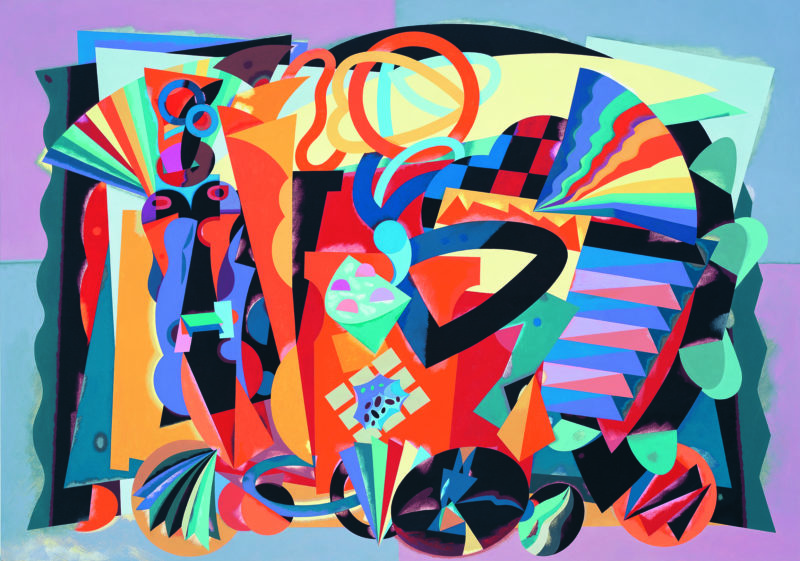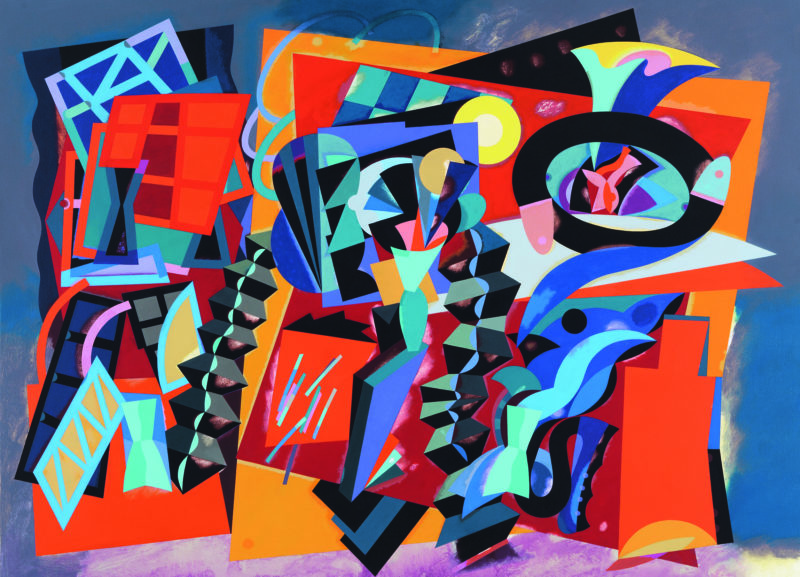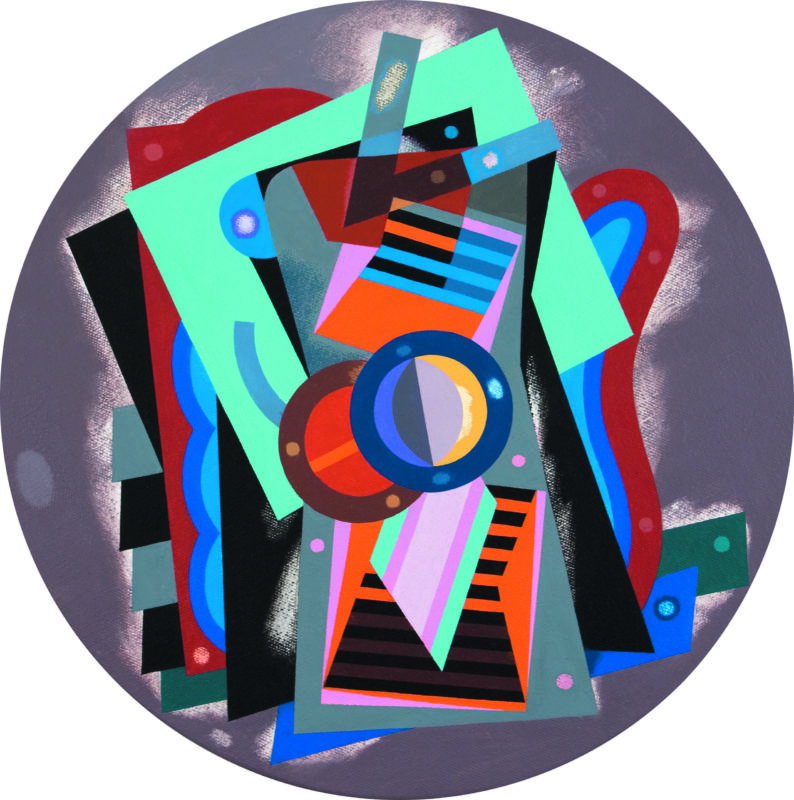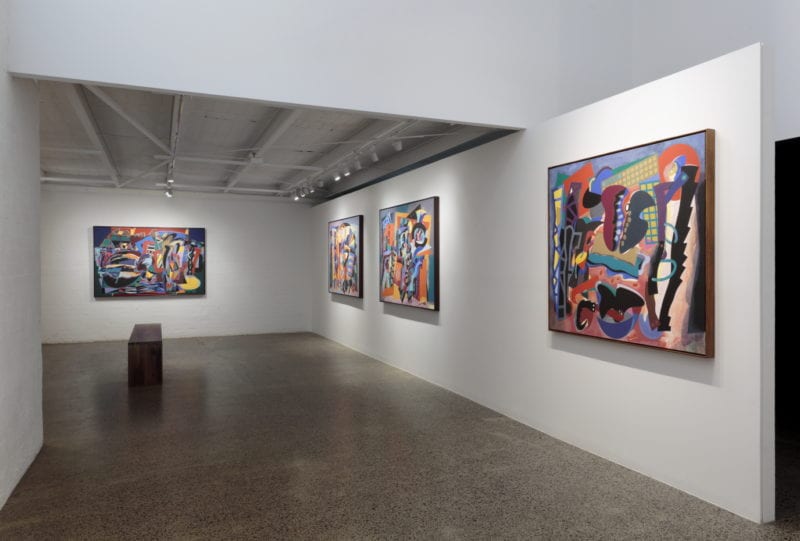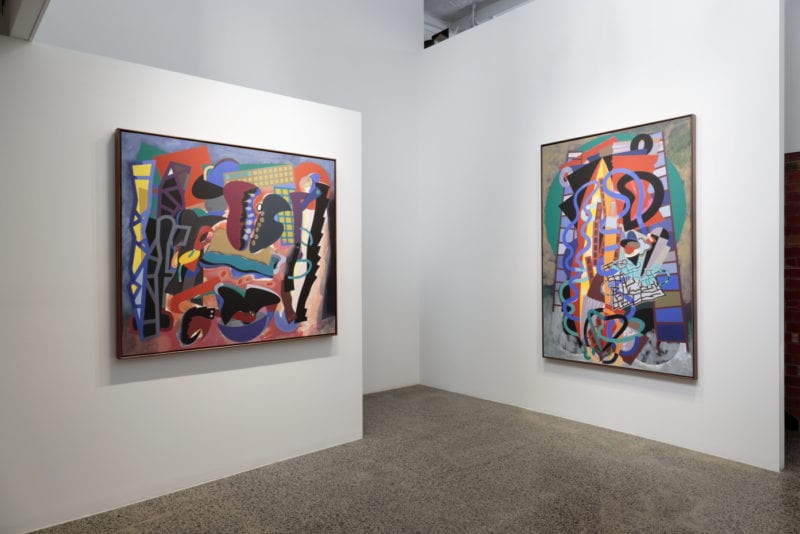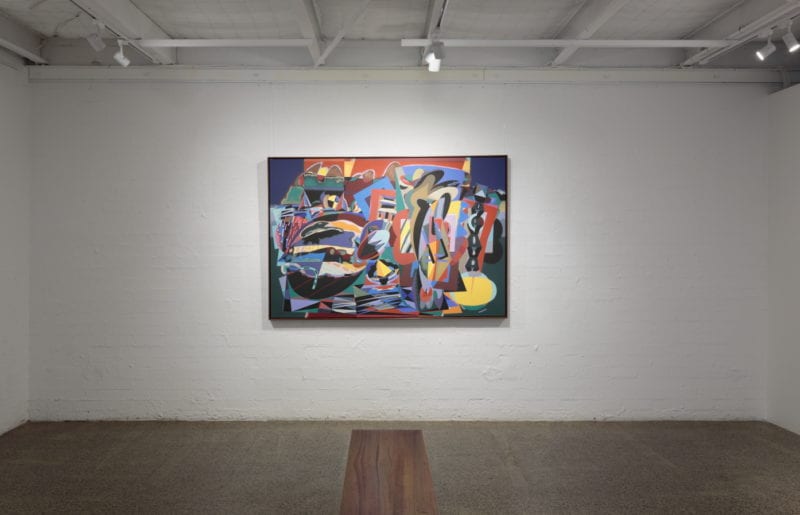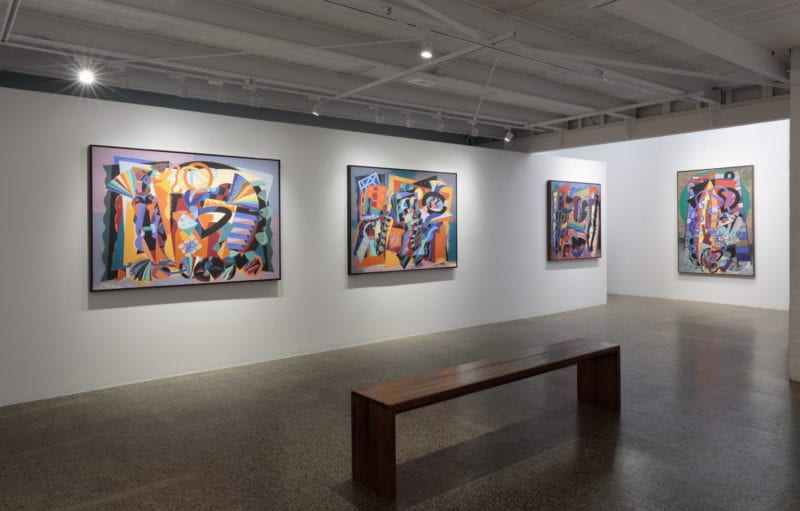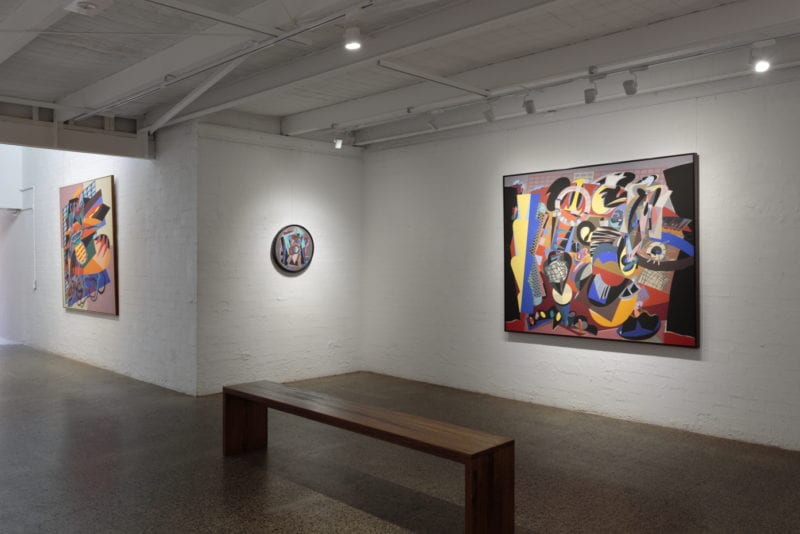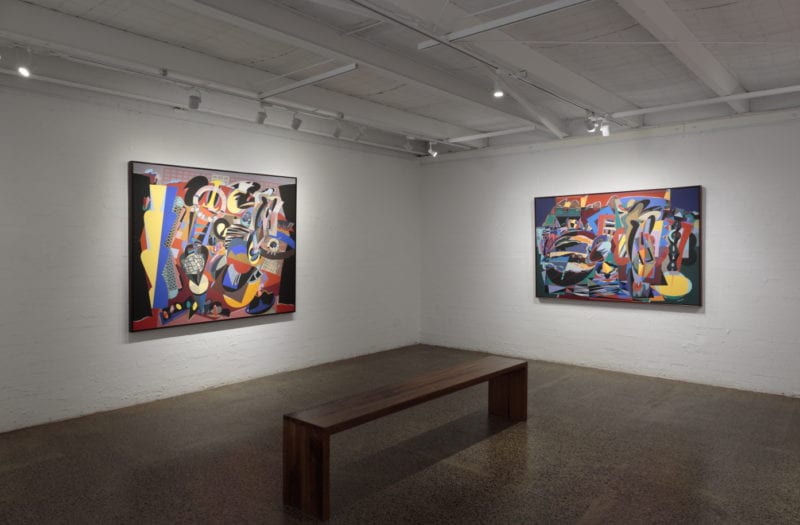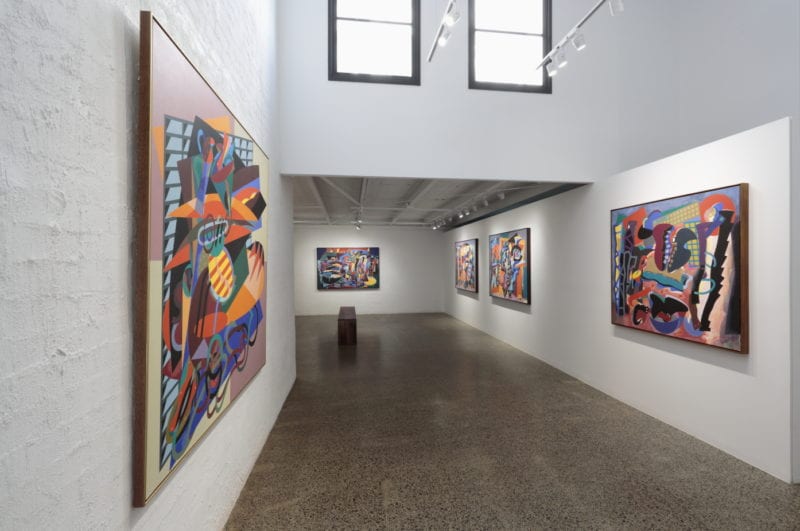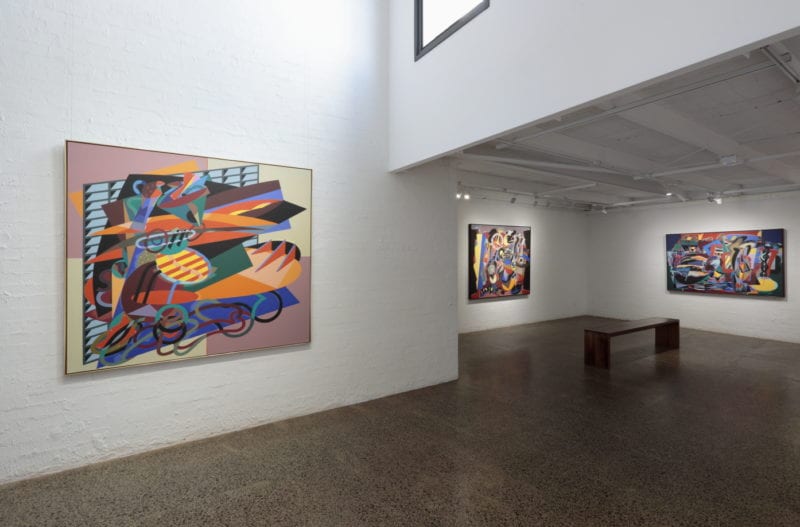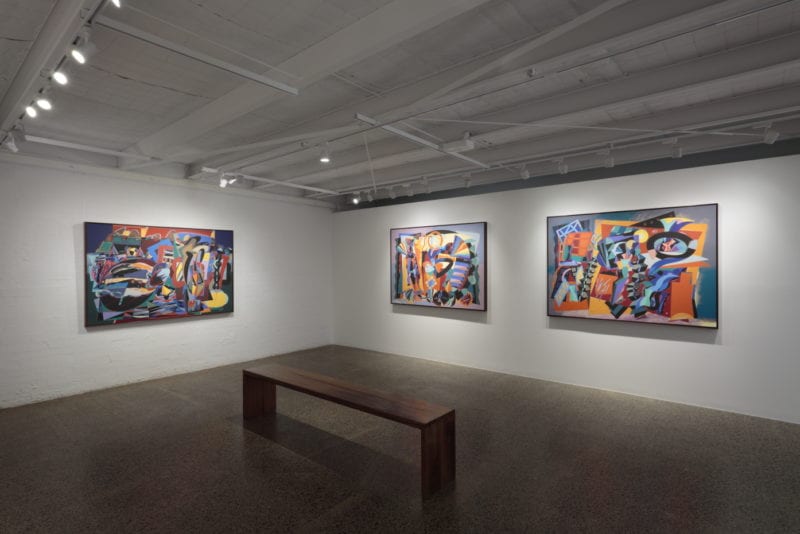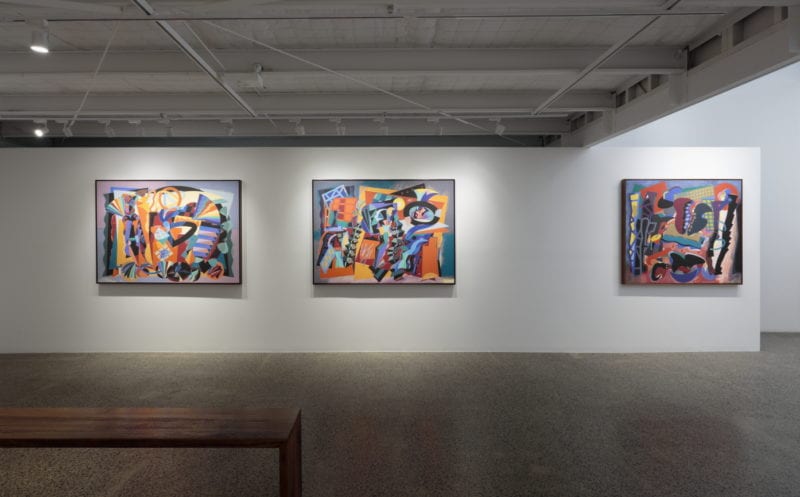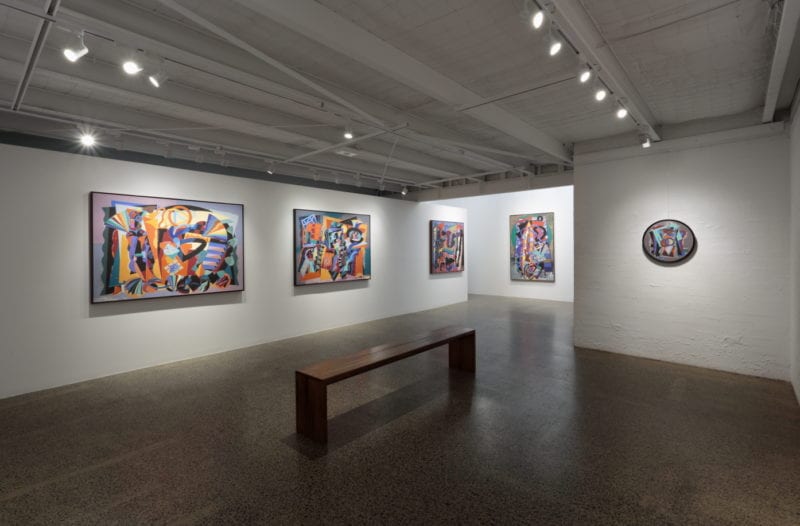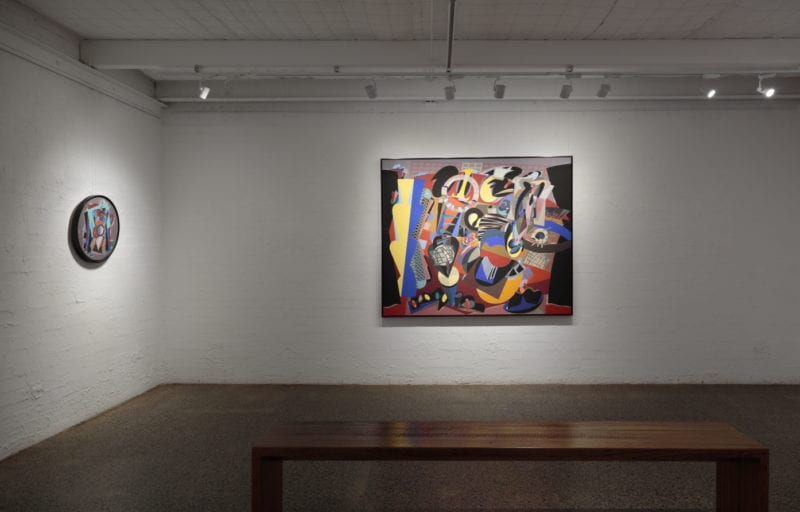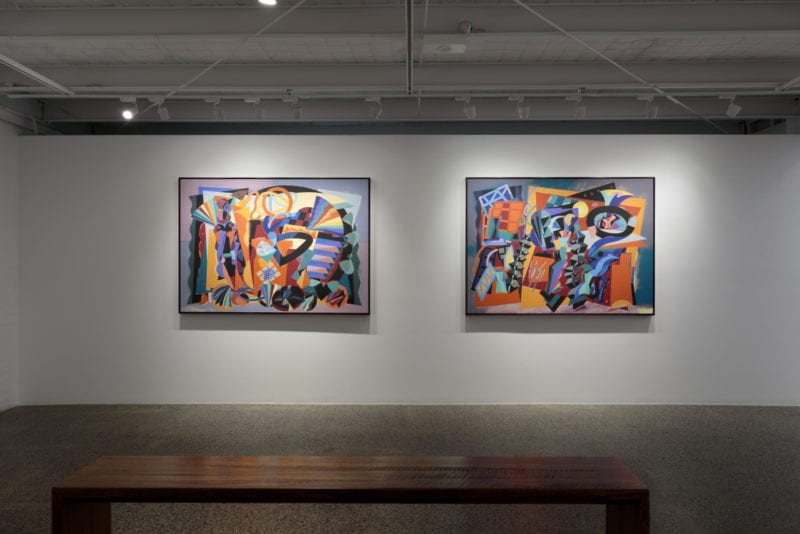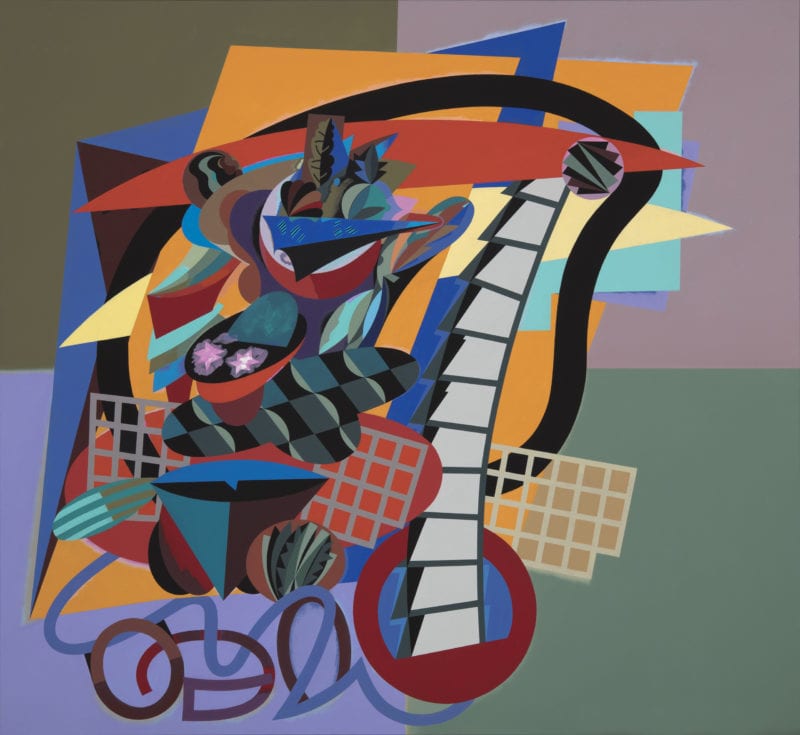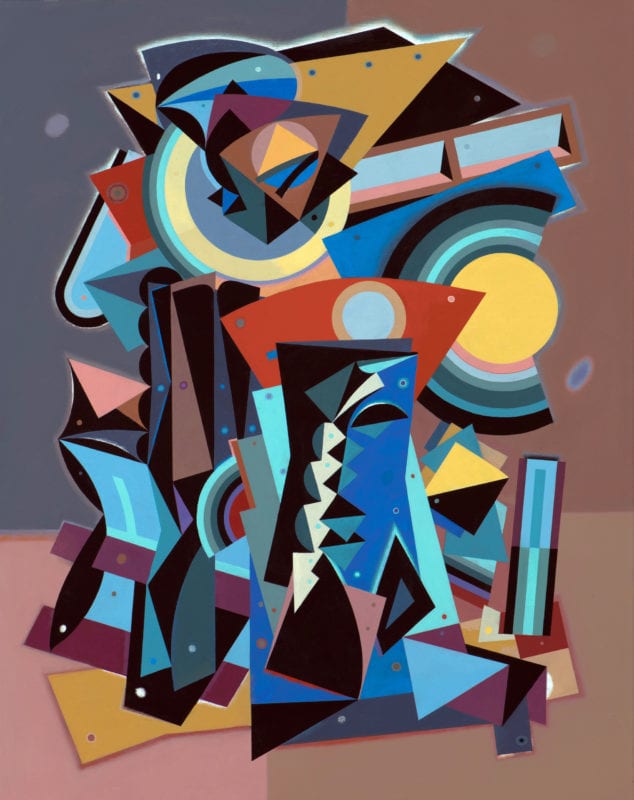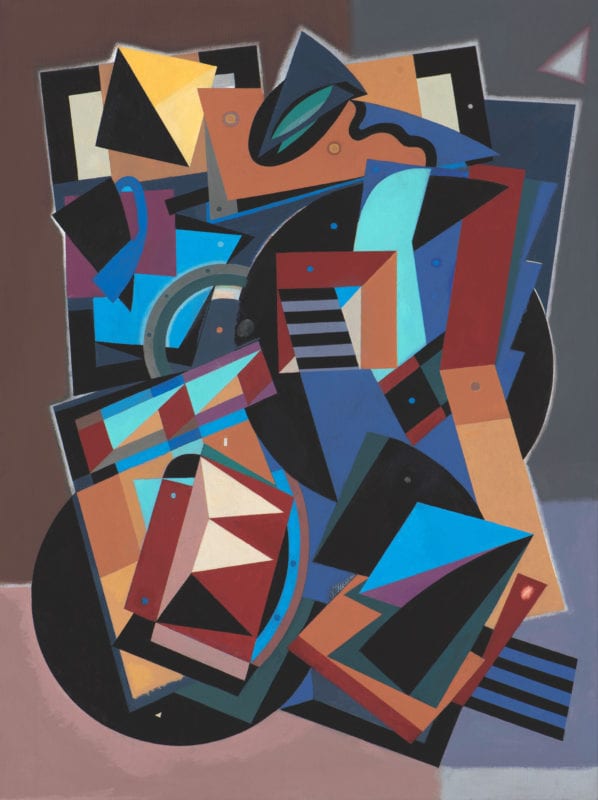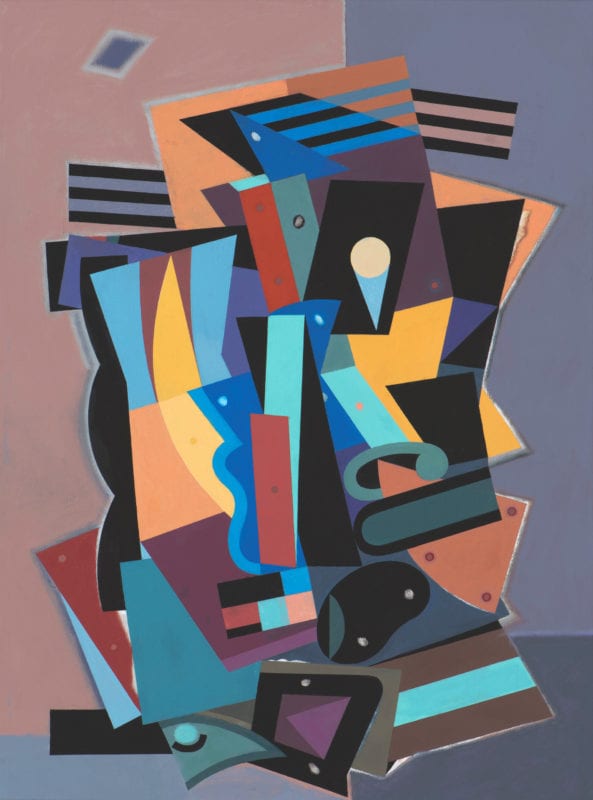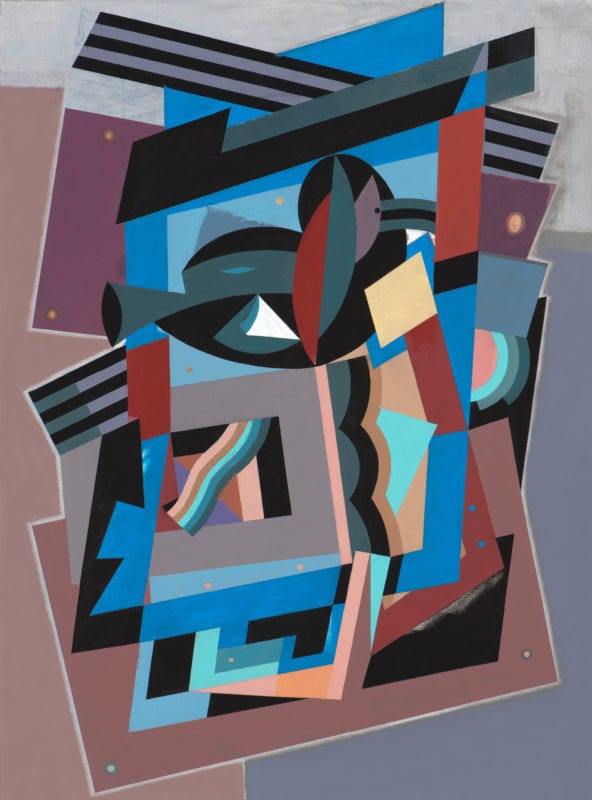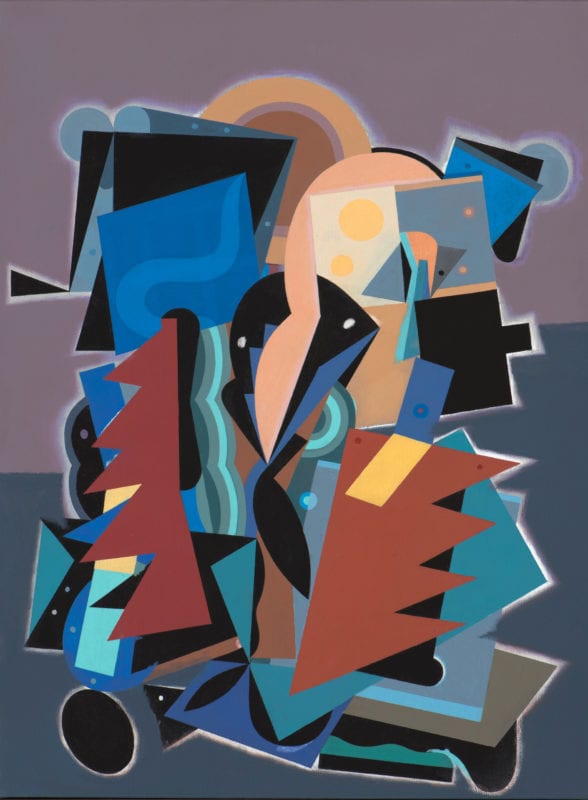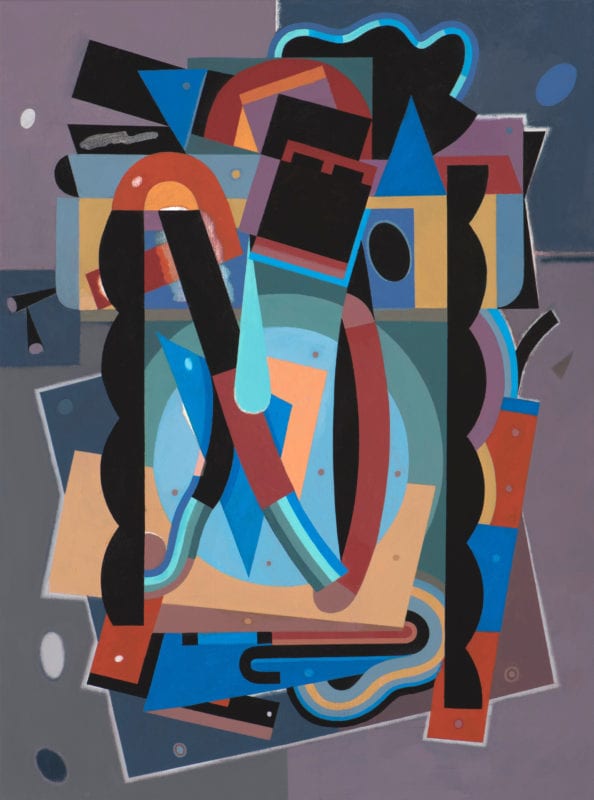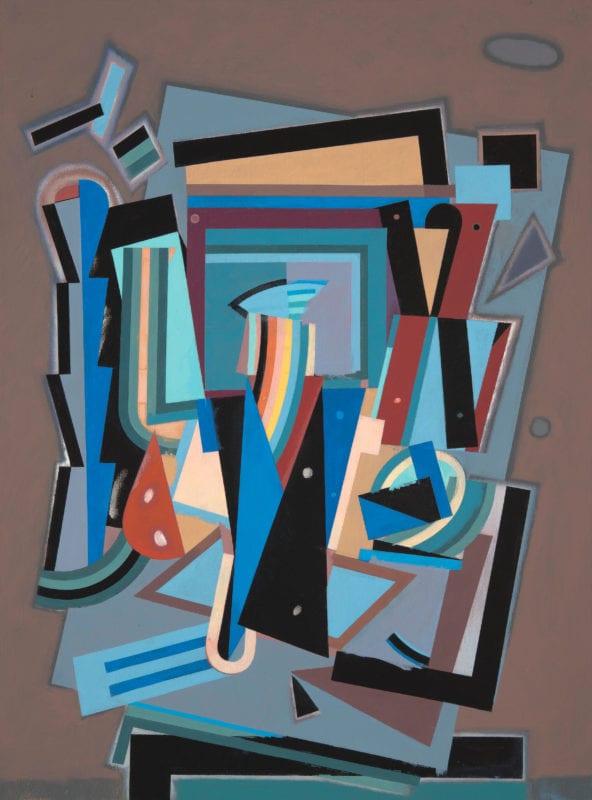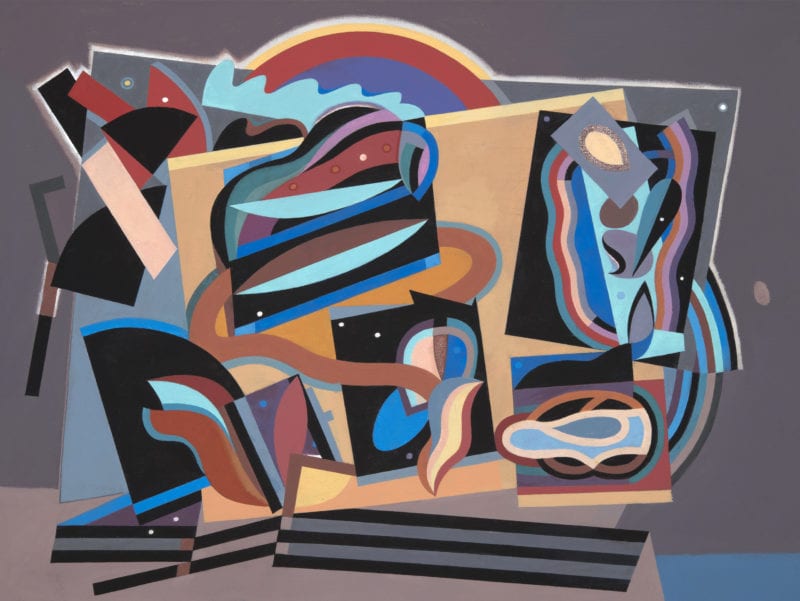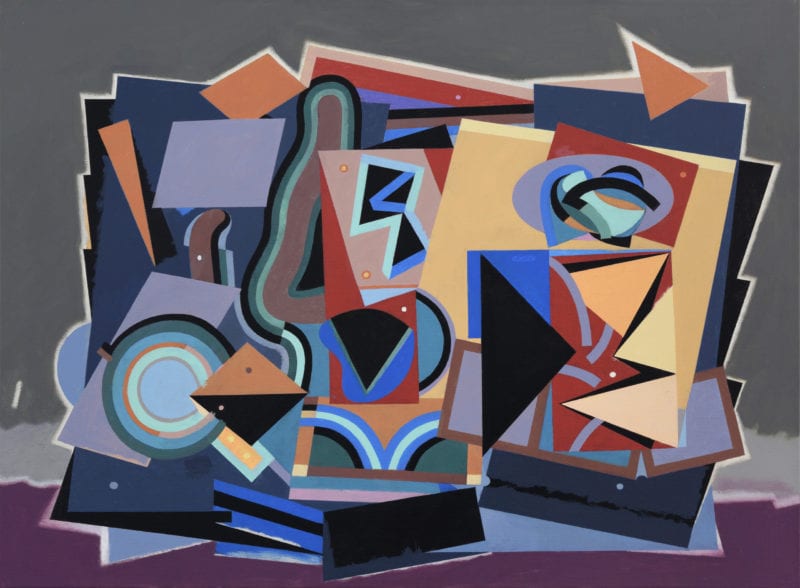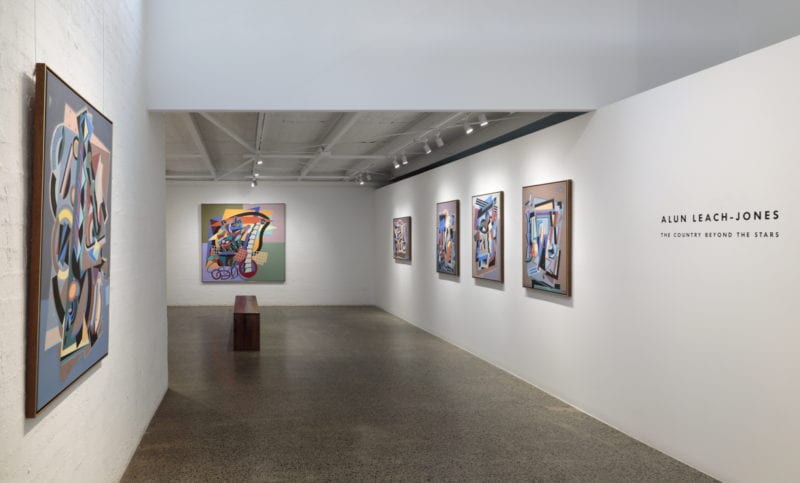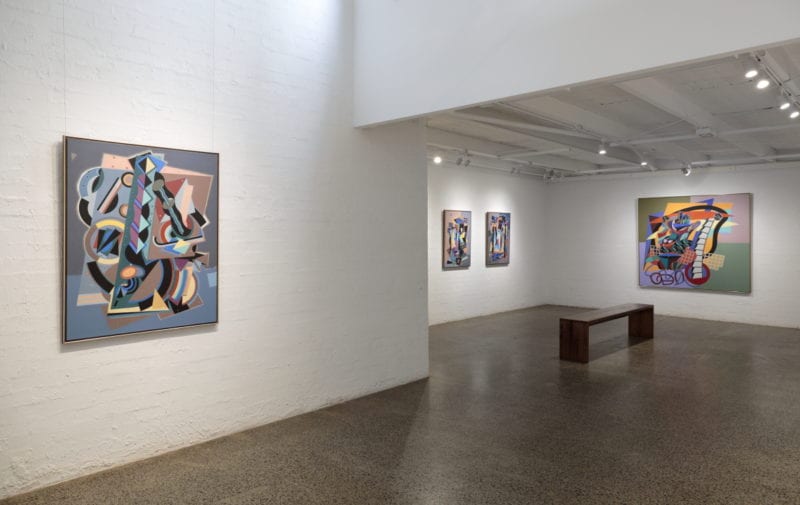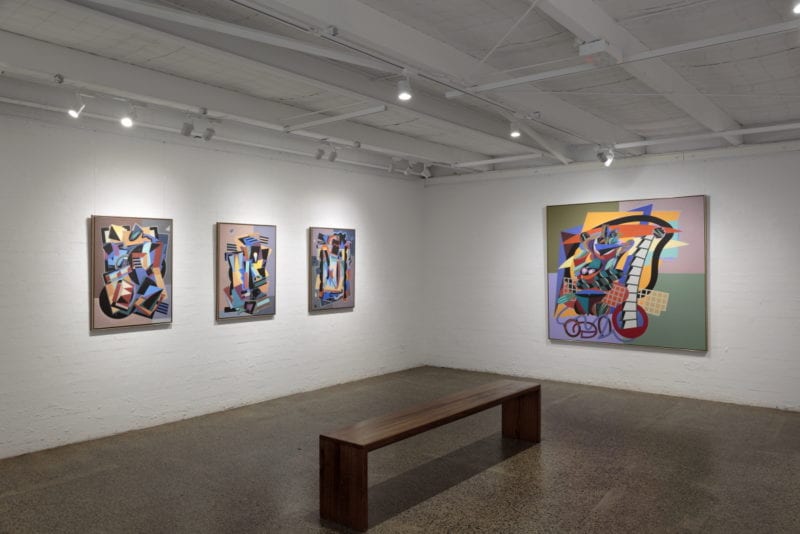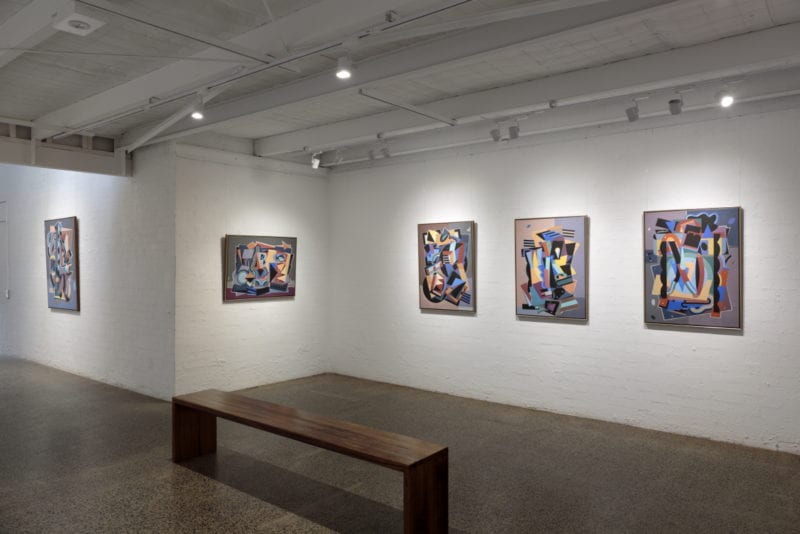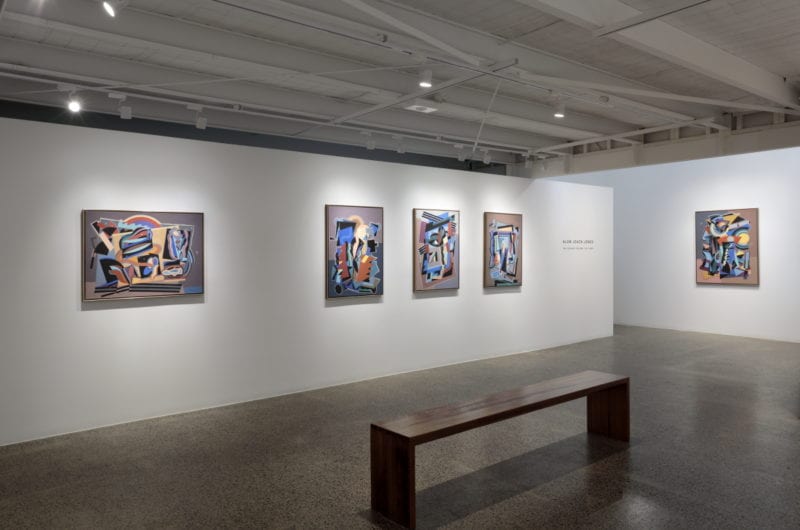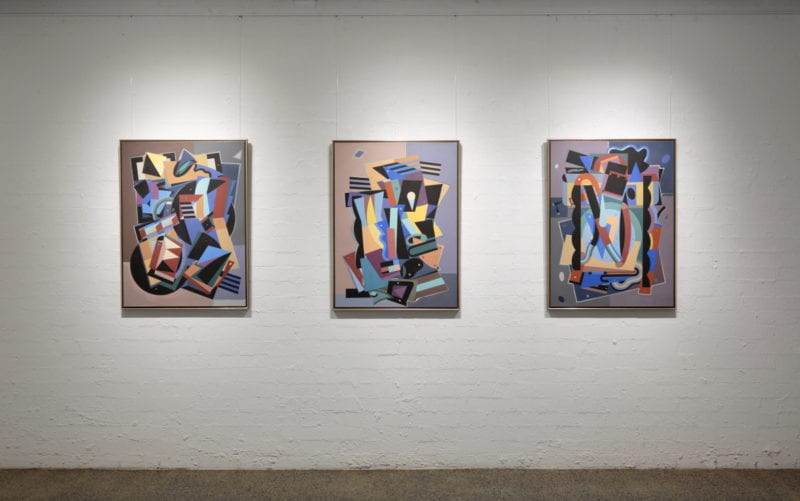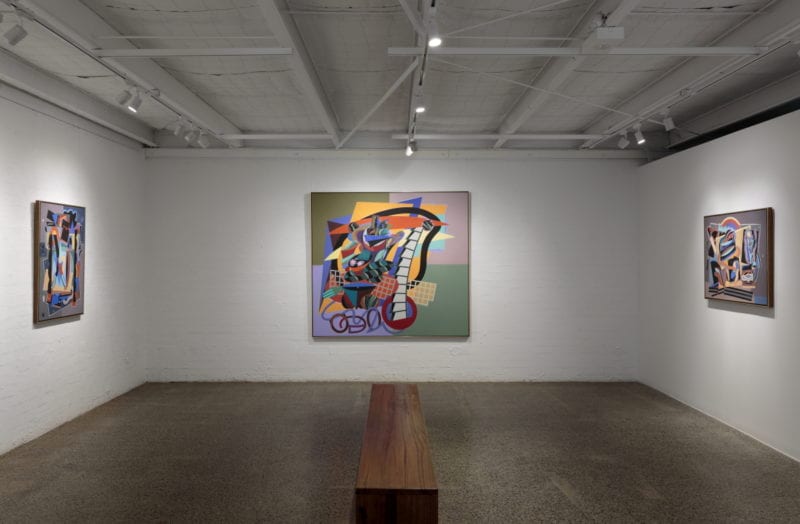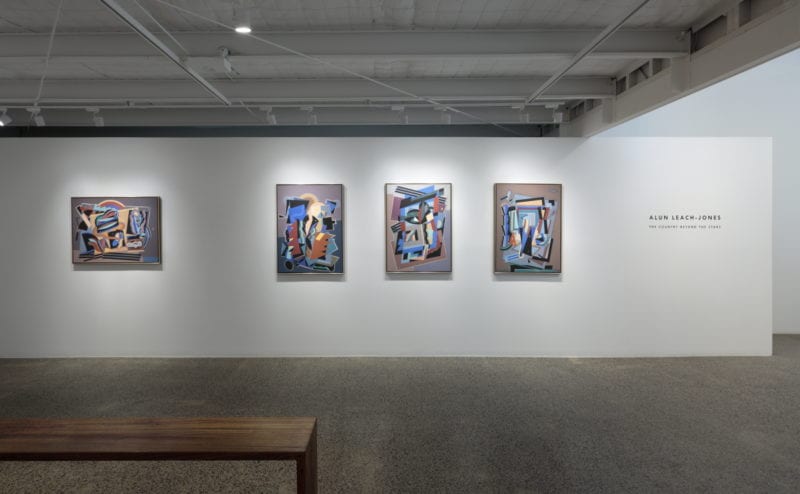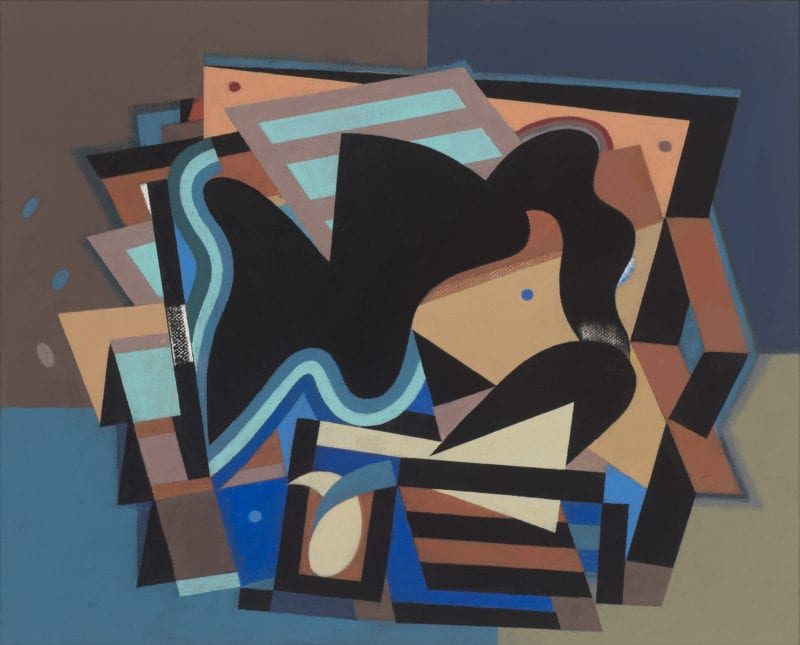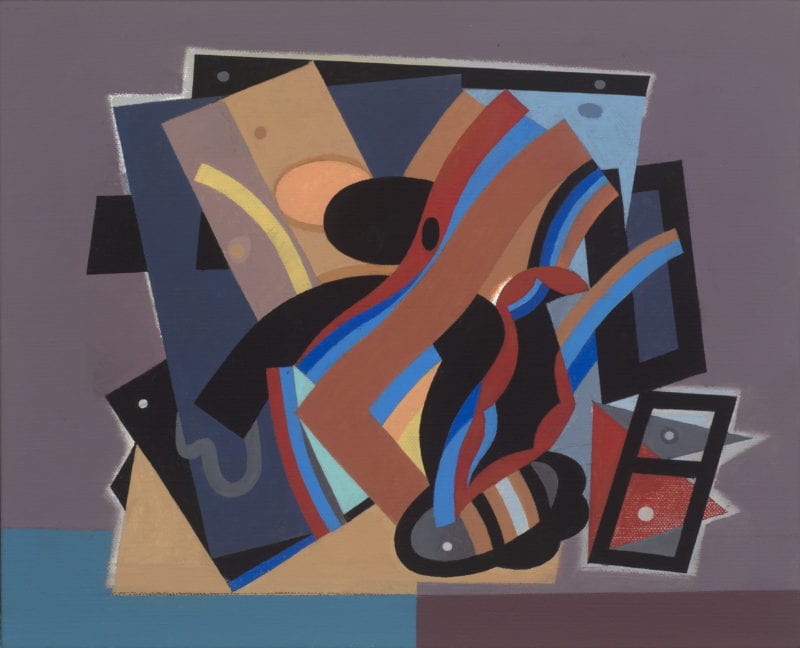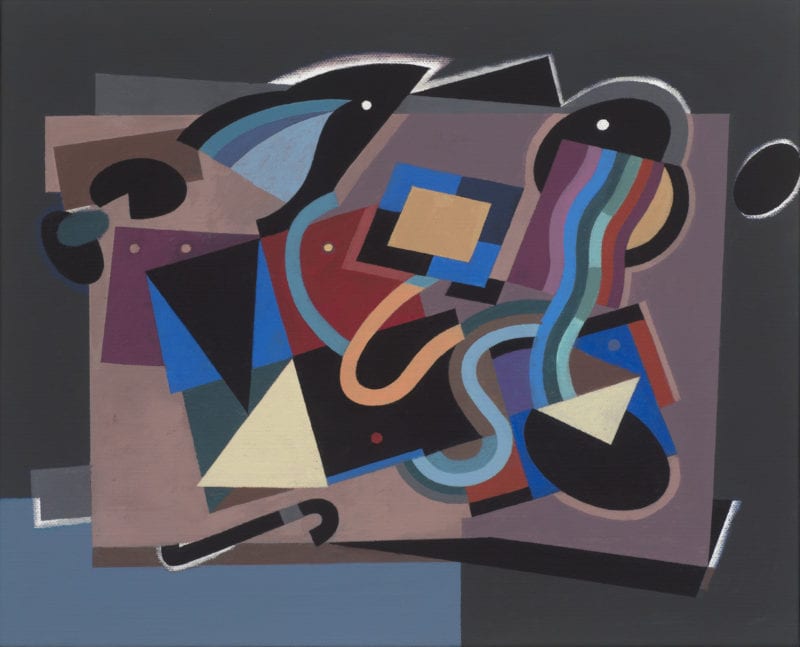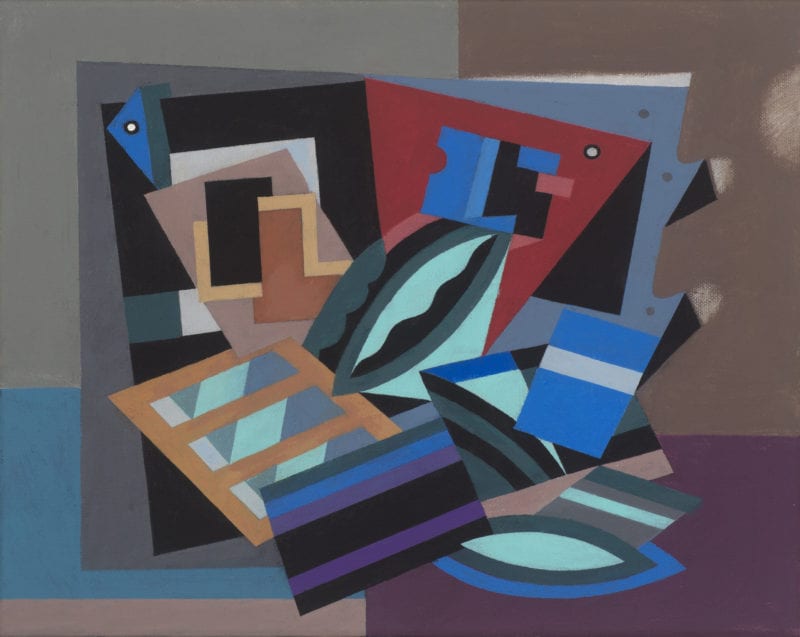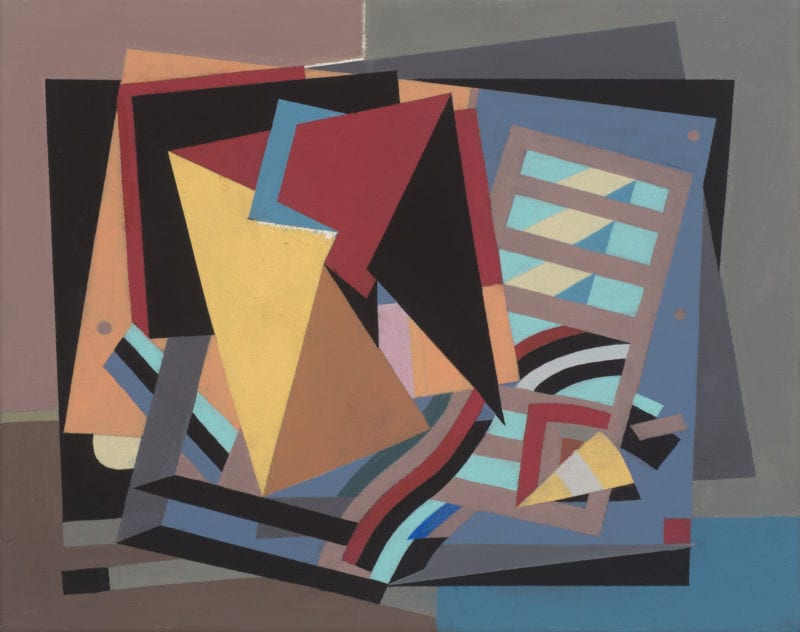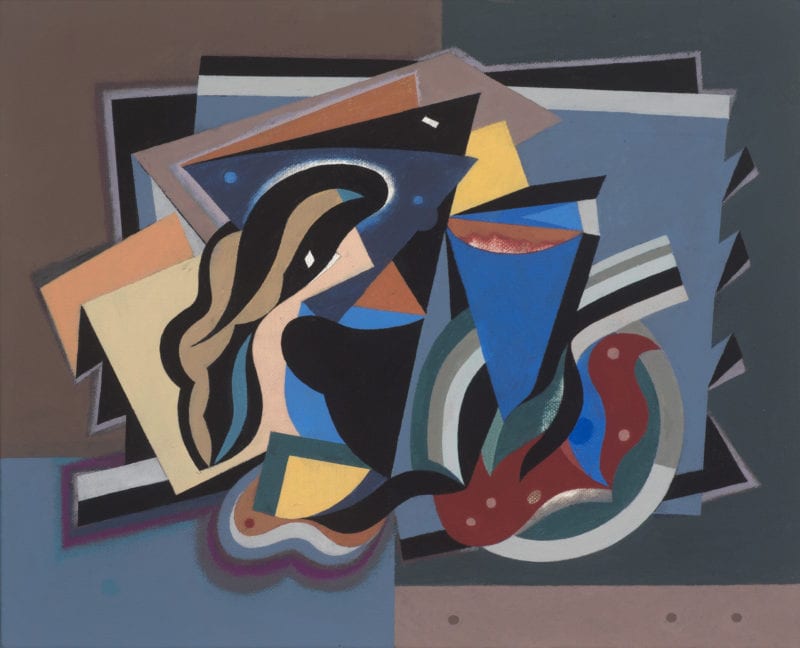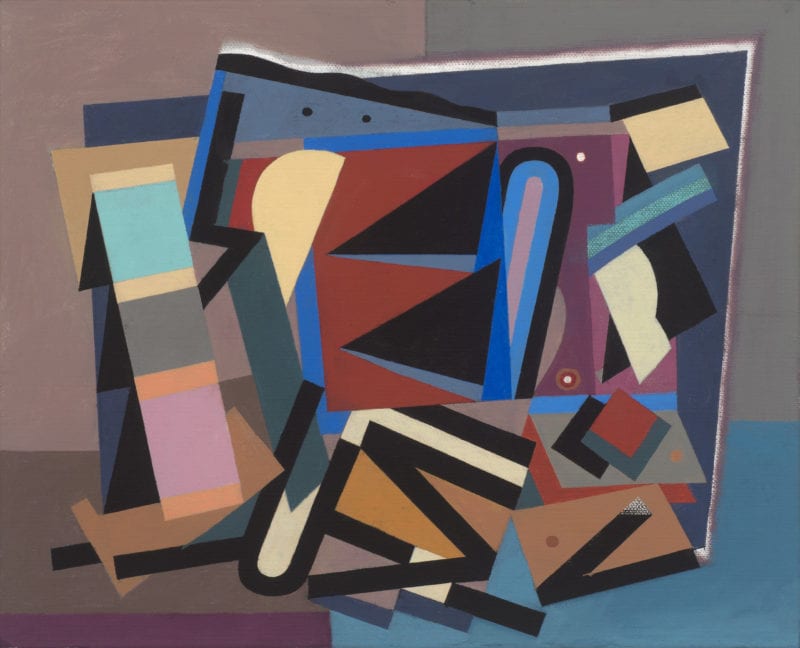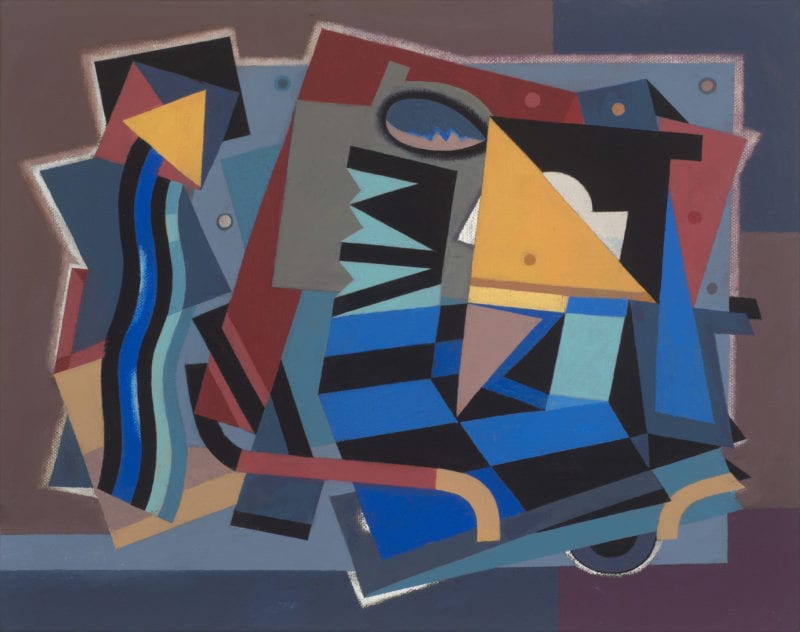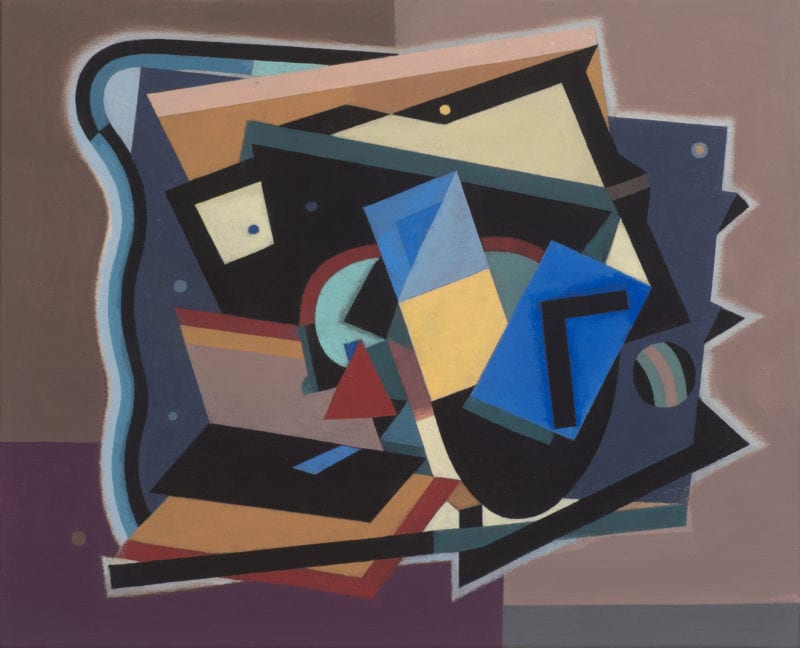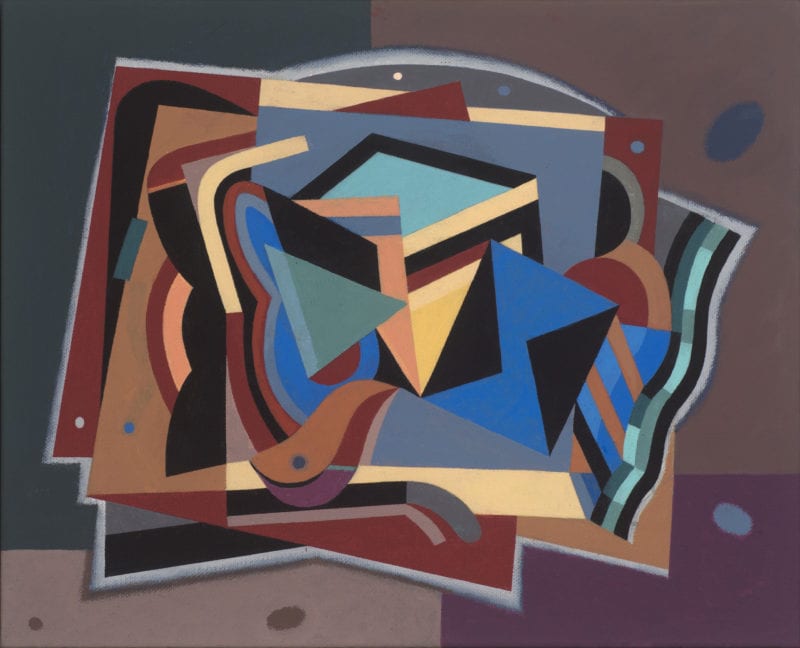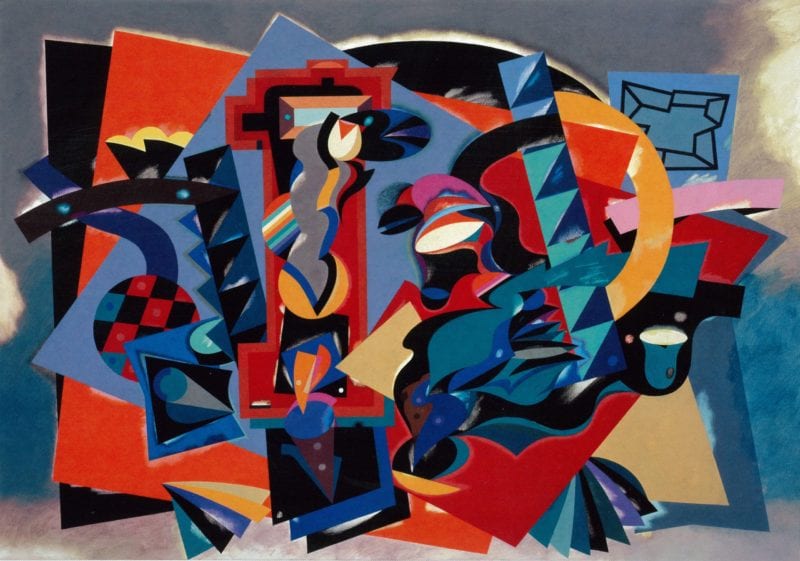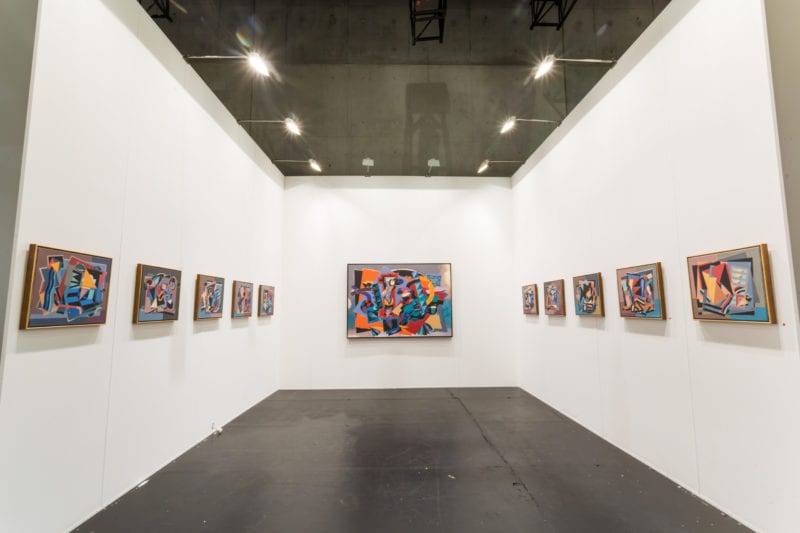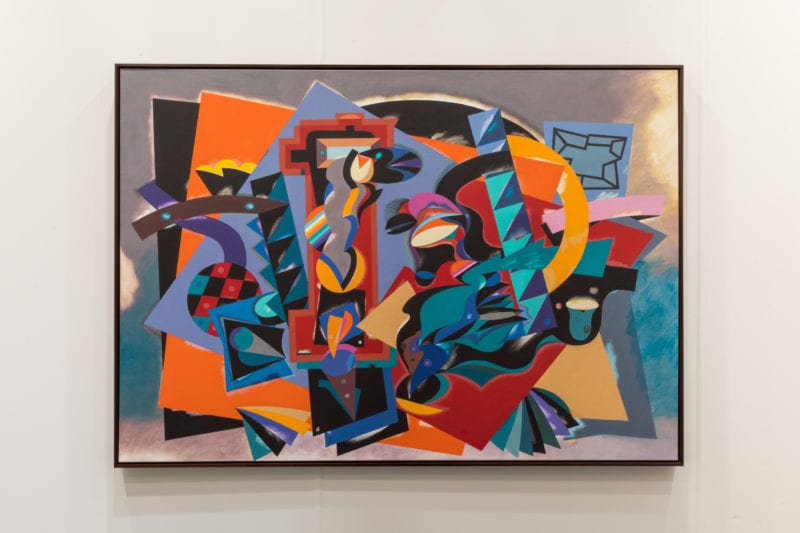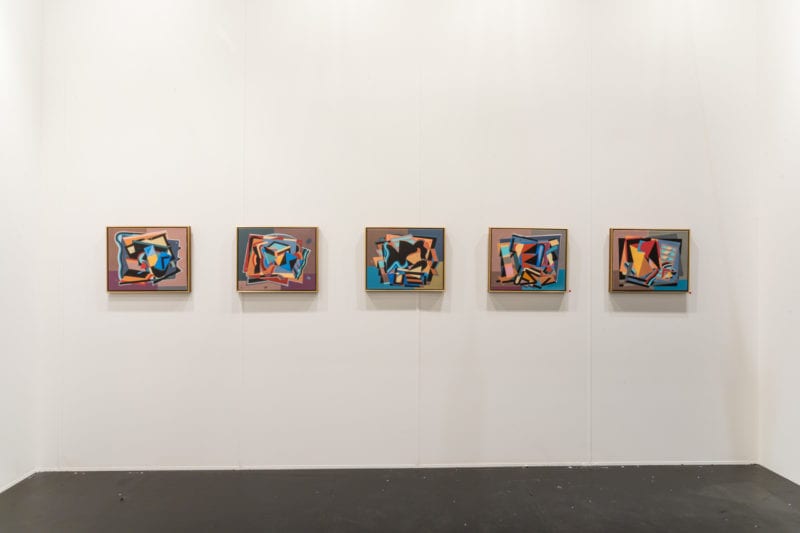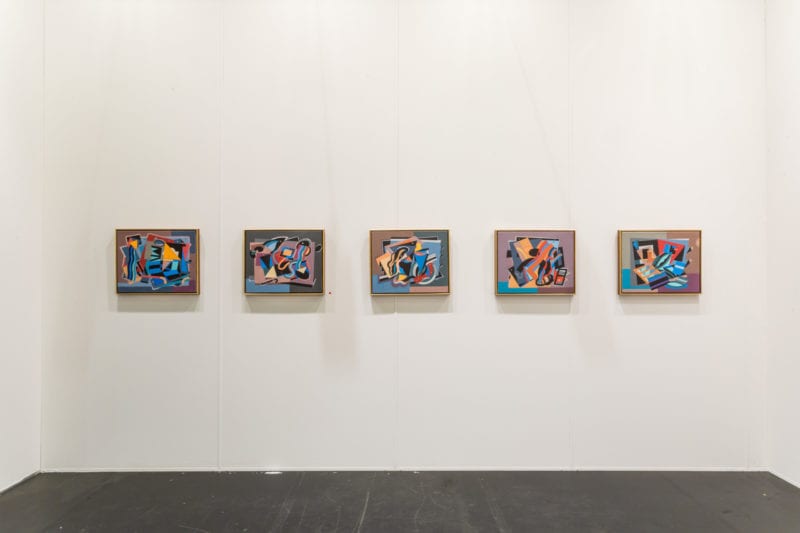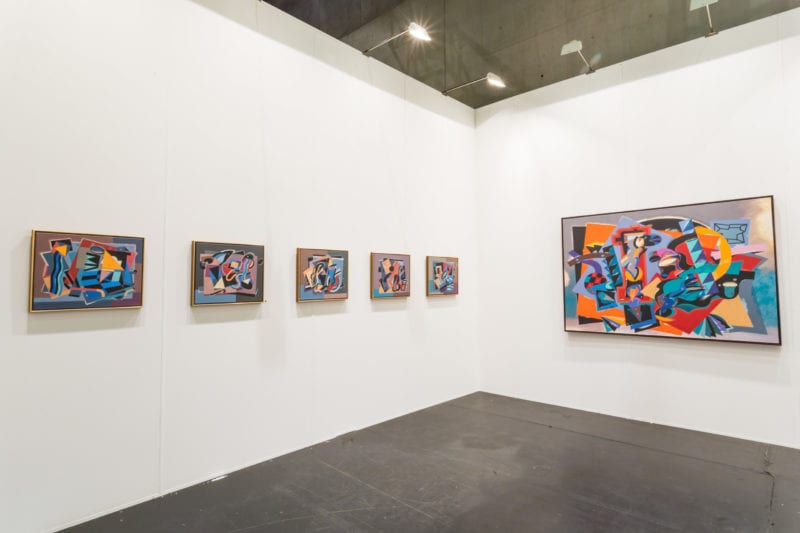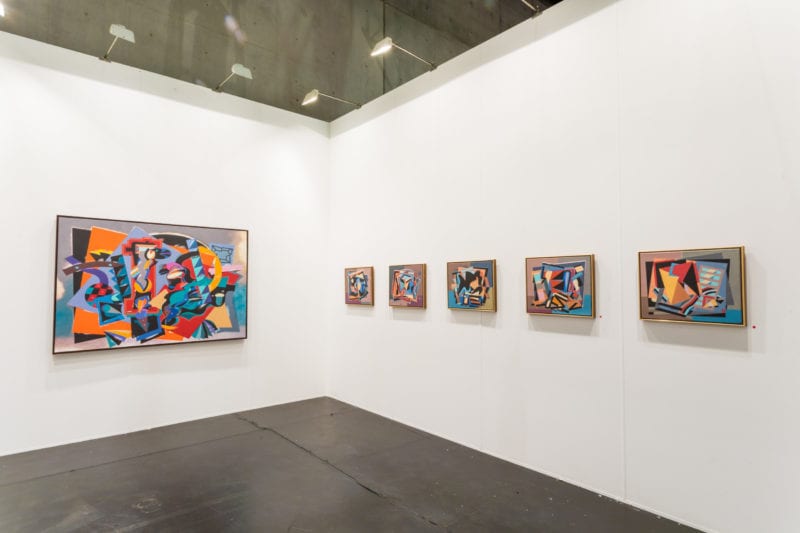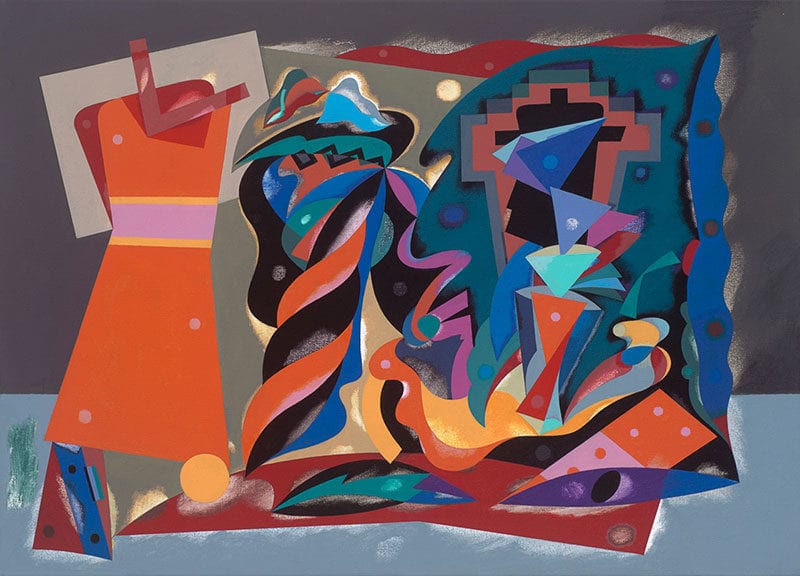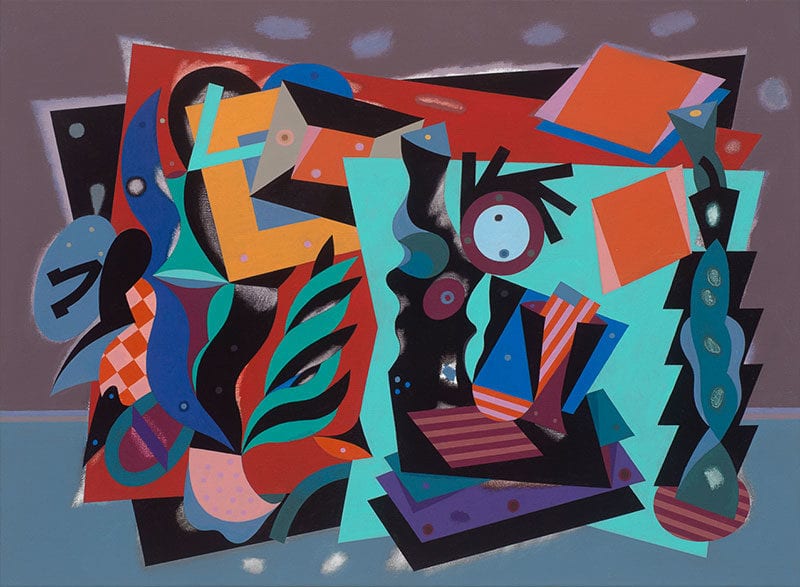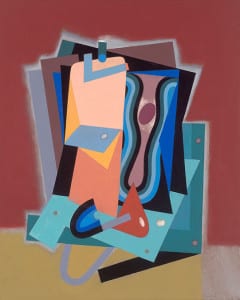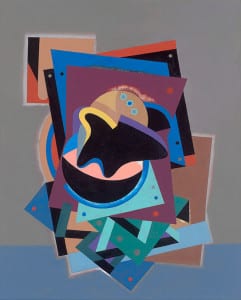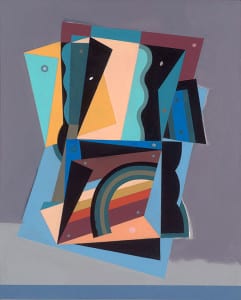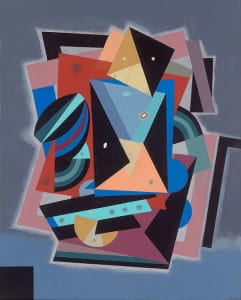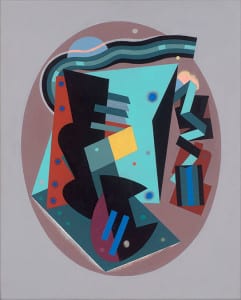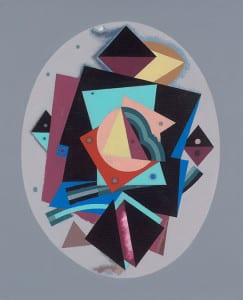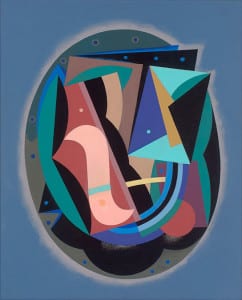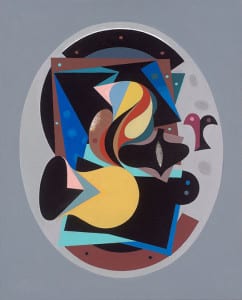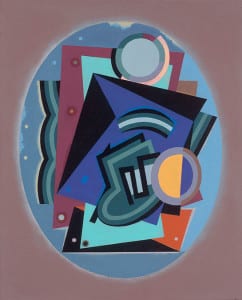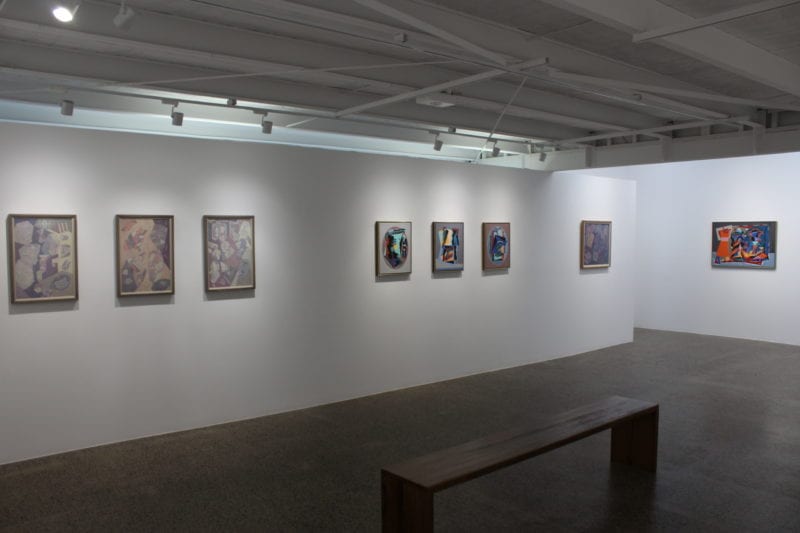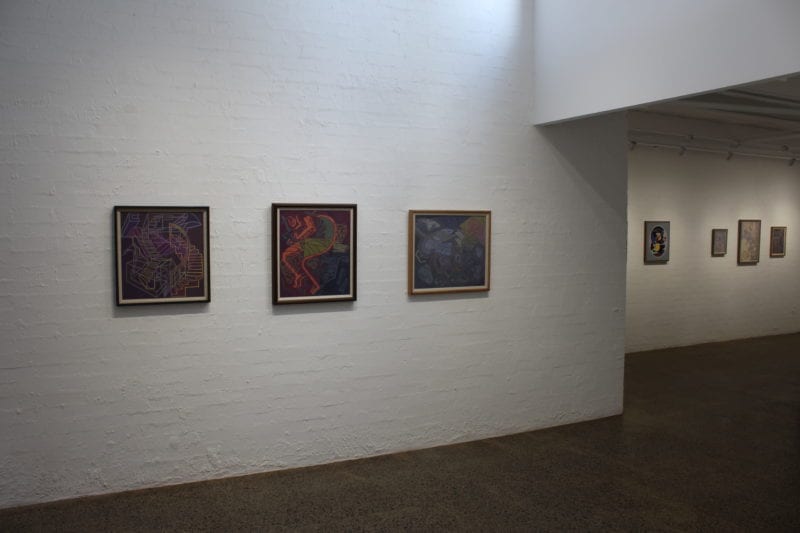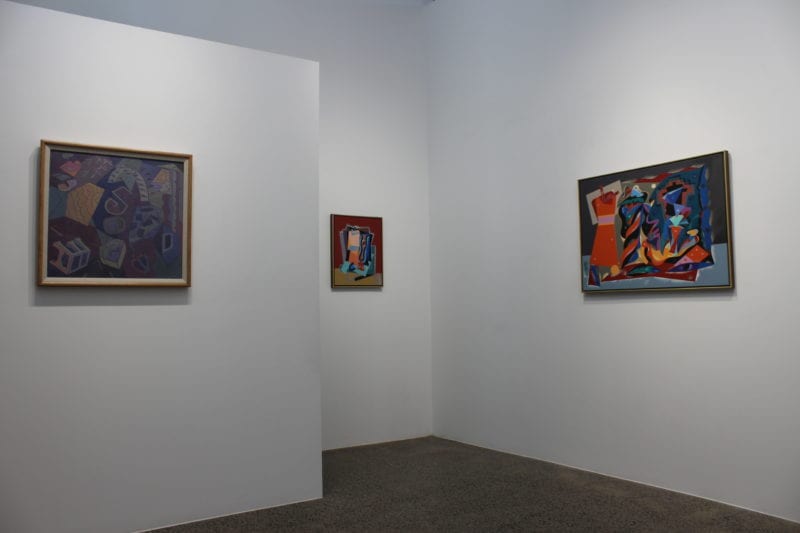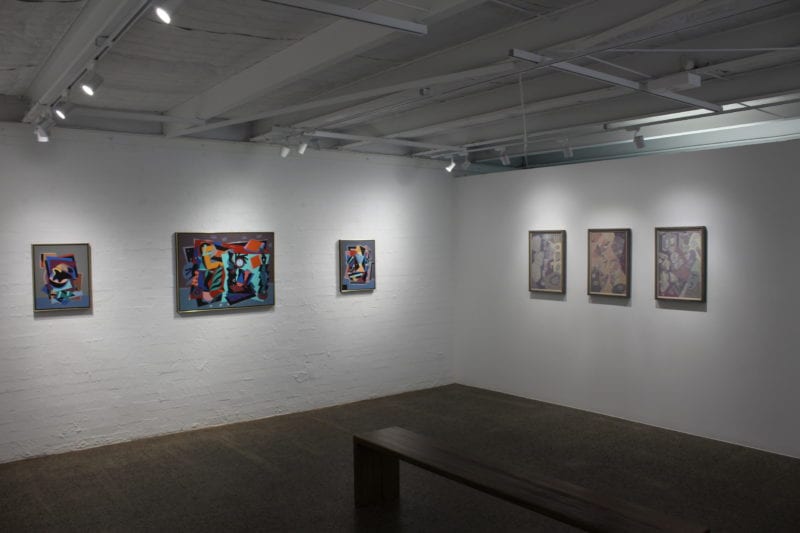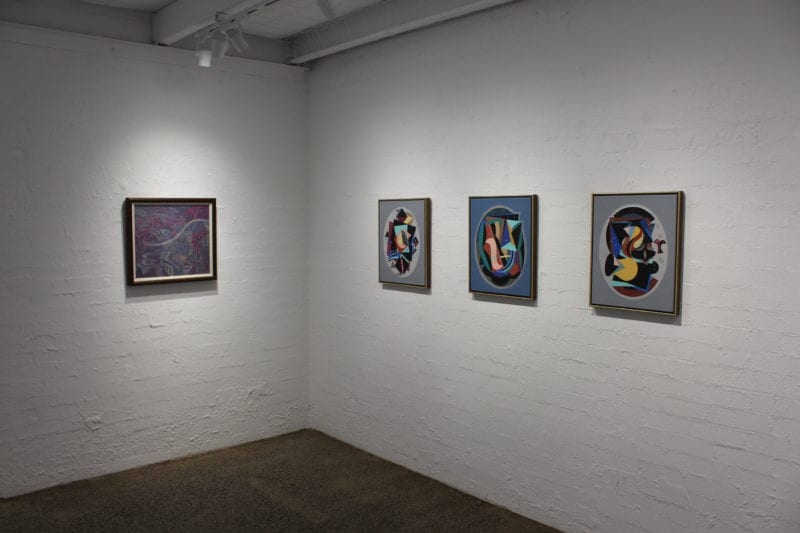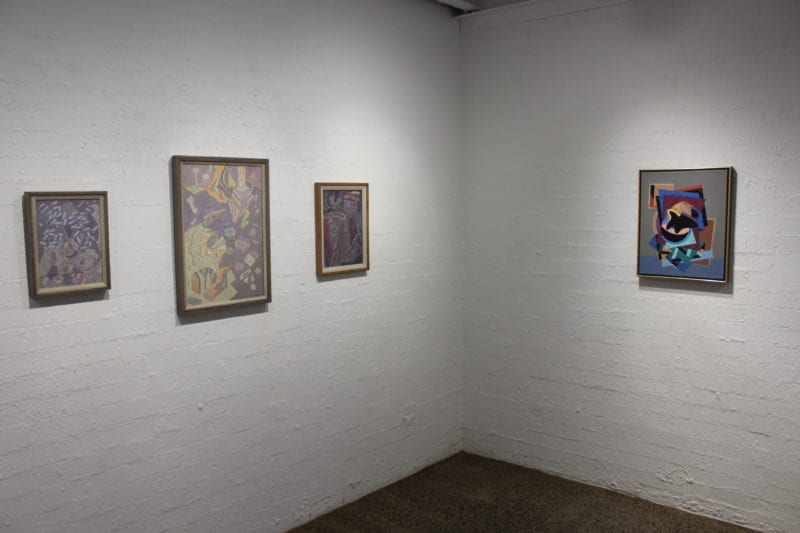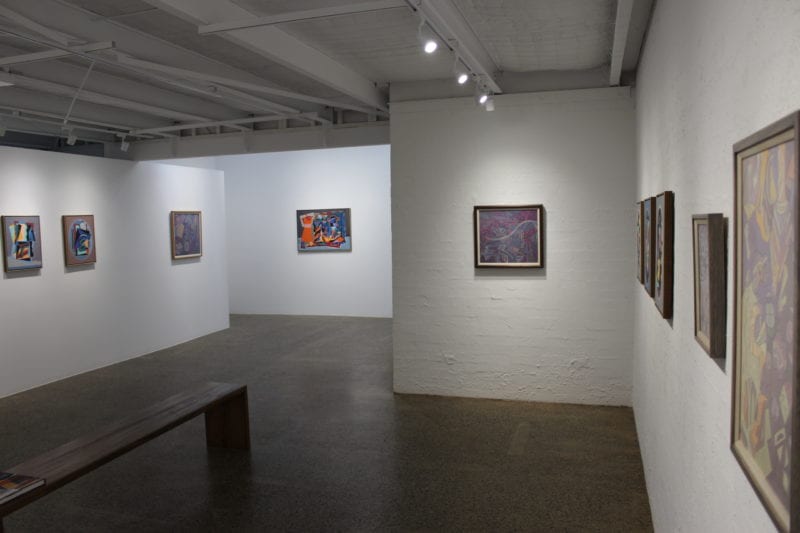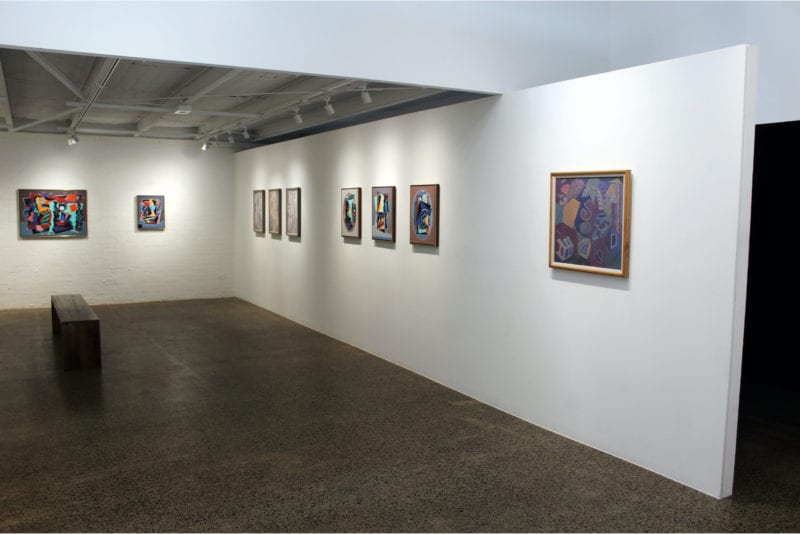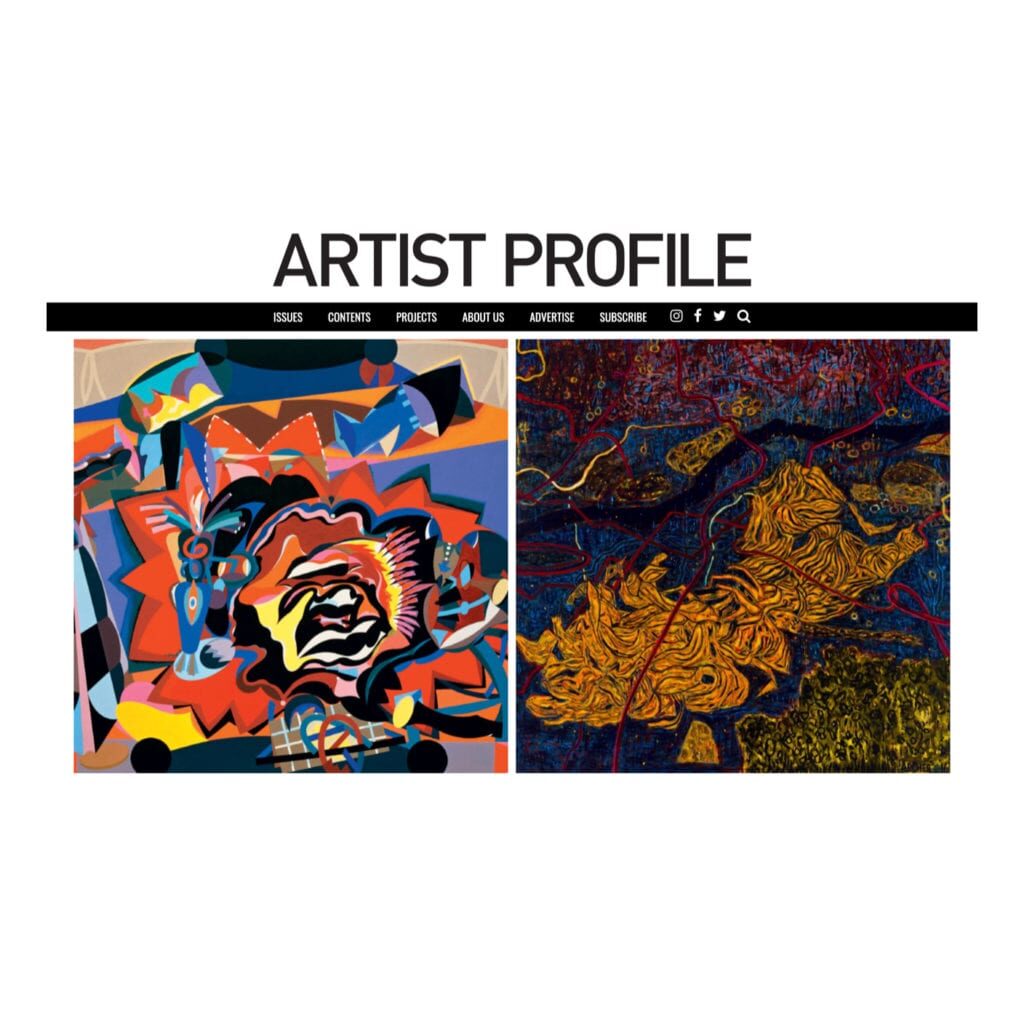ALUN LEACH-JONES ESTATE
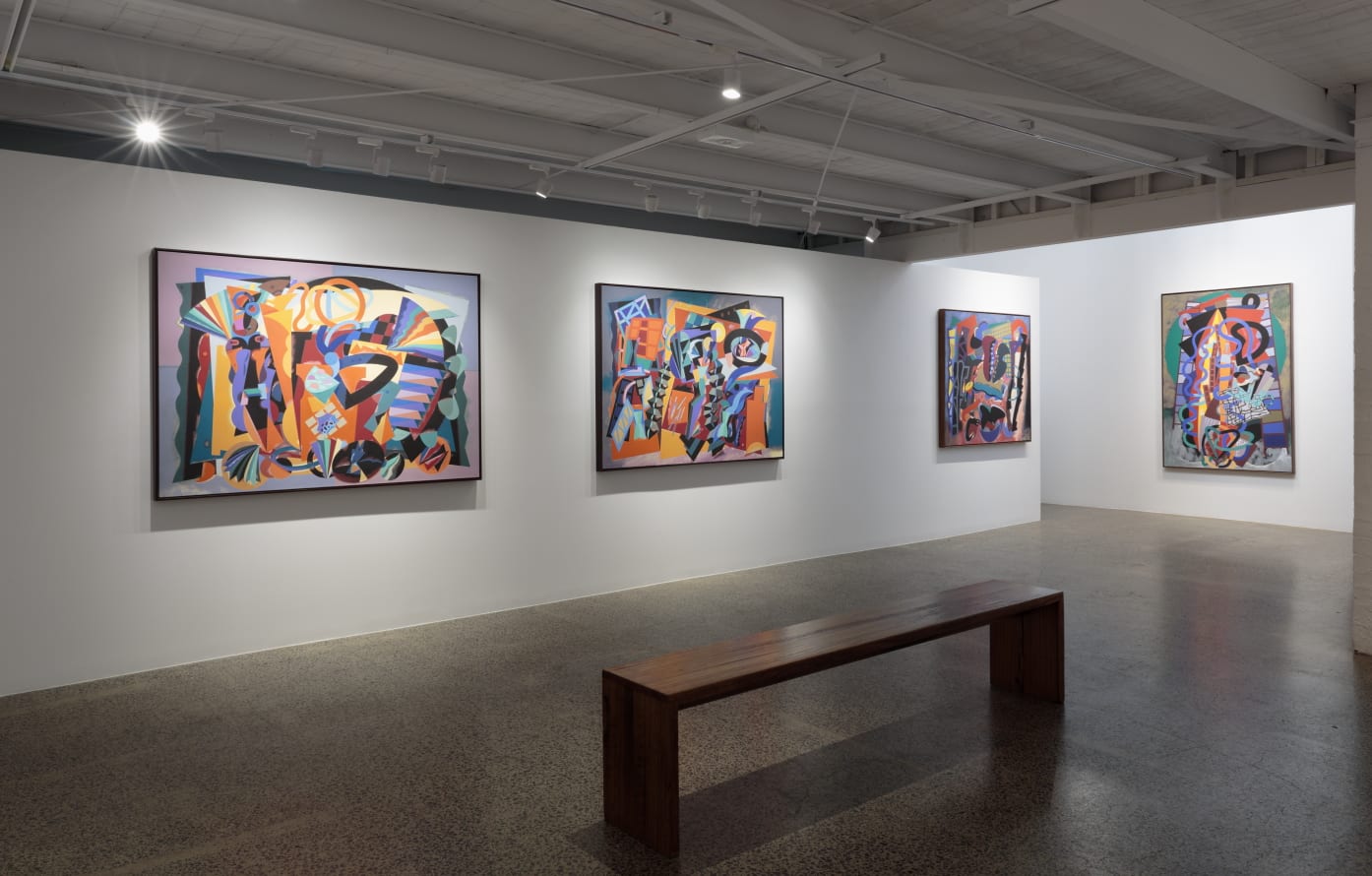
BIOGRAPHY
Alun Leach-Jones (1937 - 2017) held more than 80 solo exhibitions between 1964 and 2017. His work has been included in significant group exhibitions including The Field at the National Gallery of Victoria, Melbourne (1968) and the Bienal de Sao Paulo, Brazil (1969). Survey exhibitions of Leach-Jones’ work have been held at Lalit Kala Academy, New Delhi, India (1974), Monash University Gallery, Melbourne (1976), Kunstlerhaus Bethanien, Berlin, Germany (1981) Glyn Vivian Art Gallery, Swansea, Wales (1992), Geelong Art Gallery, Victoria (1995) and Newcastle Region Art Gallery, New South Wales (2007). Leach-Jones is represented in the collections of the National Gallery of Australia, Canberra; the National Gallery of Victoria, Melbourne; the Art Gallery of New South Wales, Sydney; the Queensland Art Gallery, Brisbane; the Art Gallery of Western Australia, Perth; the Solomon R. Guggenheim Museum, New York; the Museum of Modern Art, New York; National Museum of Wales, Cardiff; British Museum, London and Walker Art Gallery, Liverpool.
ARTIST CV
DOWNLOAD HERE
WORKS
CONTACT GALLERY FOR PRICE INFORMATION
PAST EXHIBITIONS
PAINTINGS 1998 TO 2008
27 MARCH T0 7 APRIL 2019
THE PLAIN SENSE OF THINGS
There must have been many a man who knew, without leaving his own narrow district of the plains, that his heart enclosed every land he could have travelled to.1
There is something to be said for only needing to walk around the block to find inspiration for your art. It’s a creed one can stick to. Maybe you don’t even need to leave the house. You can live up inside your mind, or other people’s through books and reproductions.
I think about this when I look at these paintings by Alun Leach-Jones. I never knew him, but I knew he was there. A singular figure doing his own thing. Someone who was a part of, yet distinctive from most of the painting going on around him.
Leach-Jones had a moment in the 1980’s where his work was somewhat obligatory - reproduced and collected, exhibited in museums. But these moments are exactly that – that window can open up and just as easily shut. The work doesn’t change though – we change – and everything has a chance to come back again. Something of which I think the artist himself was aware – making a painting called Snakes and Ladders seems a testament to that.
Born in 1937 and coming to Australia in 1960 perhaps like any migrant he felt somehow displaced. During his teenage years he was trained as a painter of illuminated manuscripts, a trade that now seems somehow out of reach, like a fable, connected to a deep past of physical human learning and skill that has been for the most part severed.
And his work always seemed oddly out of place – when pop was all the rage it seemed too abstract. It had that quality that pop was searching for, a kind of automotive crispness, but it lurched too far into earnestness, maybe lacking pop’s anti-authoritarian non-hierarchical insolence.
Similarly, it seems apt that many of the paintings on display are in the ever-looming shadow of The Field and The Field Revisited, the filter through which Australian abstraction can be seen. But when abstraction had its moment in the sun Leach-Jones appeared too figurative, or poetic maybe. When purity was demanded, typified by the dull end game of colourfield abstraction and nihilistic conceptualism, Leach-Jones’ paintings seemed to have too many claims to the world of things.
It could be from that illumination. You do yourself a disservice in concentrating on an artist’s juvenilia especially for a painter with such a long career like Leach-Jones. But I remember holding a print of his in my hand for the first time and being transfixed by its precision, a hall mark of his work. The images seemed to be composed of linear forms all teetering as if on the point of collapse, dependent on the other like words stacked up, like stanzas in the poetry Leach-Jones often refers to but not unlike a series of words, letters and marginalia running up the side of medieval manuscript, crisply delineated in strong opaque colour and eccentric curlicues.
I like the idea that Leach-Jones seems in his last years to have discovered that he could apply this perfectionism to a world that existed on the dining, studio and kitchen tables that he used every day. These late paintings show us an artist for whom the everyday habits of a lifetime held him in good stead. Surrounded by books and the artist’s own past, snatches of poetry and recurring colours and shapes form, coalesce and emerge not unlike origami floating higher and higher. Fans, clouds, scribbles all brought together in composition where no moment is wasted, and every shape, colour and fold are minutely considered. An alphabet is formed that continues from painting to painting. A double headed snake, a fan, an amoebic palate an accordion or concertinaed book. In Instruments of Solitary Navigator an open lattice form emerges as a structural device, a way of catching the forms moving across the canvas, like the way a cyclone fence might catch rubbish. But the open lattice work also resembles to my eye paintings stacked in the corner of the studio and a motif of rifling through the past for inspiration. In the later series The Plain Sense of Things this lattice work can almost be shuffled as forms move out and across. The geometry holds things down, but the images seem to lift up swirling into a cubist hurdy-gurdy.
The studio is one little room an everywhere2. Cluttered with books and objects, half-finished paintings, others artworks, painting materials – we sense Leach-Jones sits endlessly fidgeting moving shapes and colour around. Time dissolves from 9-til-9, the work-a-day life. The tick-tock.
It’s a nice idea that world. That room. That studio.
Glenn Barkley 2019
1 Gerald Murnane, The Plains, Text Classics, 2012 (first published 1982)
2 John Donne, The Good-Morrow, 1633
THE COUNTRY BEYOND THE STARS
5 TO 20 MAY 2018
Beginning in 2015, Alun Leach-Jones revisited a large work from 2003 titled The Country Beyond the Stars as a starting point for the new body of painting in this exhibition. These works titled The Country Beyond the Stars #1 - #10 are the last paintings by the artist.
The title The Country Beyond the Stars has appeared previously in the artist’s oeuvre. A renowned poetry enthusiast, Leach-Jones drew the phrase from the opening lines of 17th century Welsh poet Henry Vaughan’s work Peace: “My Soul there is a country, Afar beyond the stars; Where stands a winged sentry, All skillful in the wars...”
This exhibition coincides with The Field Revisited at the National Gallery of Victoria, the fiftieth anniversary of the landmark 1968 exhibition of Australian abstraction The Field. The original exhibition included two paintings by Alun Leach-Jones completed in 1967, fifty years before the ten new works in this exhibition.
It is with great pride that Nicholas Thompson Gallery exhibits The Country Beyond the Stars, the last paintings by Alun Leach-Jones, as a celebration of his life and career and in memory of his intelligence, friendship and generosity.
Nicholas Thompson, 2018
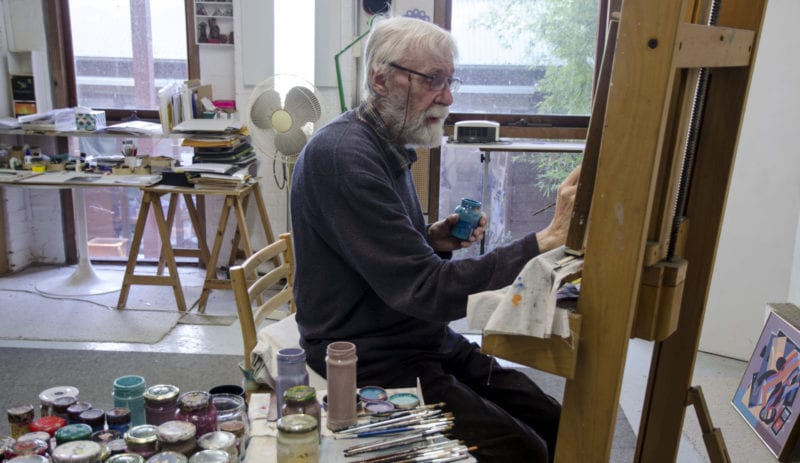

EXHIBITION ESSAY BY REX BUTLER
DOWNLOAD PDF
EXHIBITION PRESS: ART COLLECTOR
EXHIBITION PRESS: SYDNEY MORNING HERALD
Art: Alun Leach-Jones
By John McDonald, 11 May 2018
Artist: Alun Leach-Jones. Lived: North Sydney, NSW. Age: Died December 2017, aged 80.Represented by: Nicholas Thompson Gallery, Melbourne (no Sydney representation).
His thing: Abstract paintings, hard-edged and colourful.
Our take: In 2003, Alun Leach-Jones painted a large canvas called The Country Beyond the Stars, drawing his title from a poem by Henry Vaughan (1621-95). In 2017 he returned to this work as the basis for a new series. These eight paintings ended up being the last of his career.
The works were intended for a show to coincide with The Field Revisited at the National Gallery of Victoria (until August 26). This NGV exhibition celebrates 50 years since its St Kilda Road headquarters launched with a landmark survey of new Australian abstract art called The Field. Leach-Jones was one of the emerging talents showcased in it. He became a prolific and successful painter, holding more than 80 solo exhibitions.
Colour and contour are the staples of Leach-Jones's work. He aimed for the most pure form of abstraction, a visual poetry filled with emotional and musical resonances. By his usual standards these pictures are subdued in tone, but his forms are as sharply defined as ever. They are the work of a lifelong perfectionist.
Can I afford it? Given his work is held by all the major Australian public collections, Leach-Jones's prices remain accessible. Each painting in this show is titled The Country Beyond the Stars, with numbers one and two priced at $15,900 for a canvas of 122cm by 97cm. Numbers three to eight (97cm by 72cm) sell for $12,500. The record price for his work at auction is $31,720 in 2015. With the buzz generated by The Field Revisited, it's likely that will soon be exceeded.
Where can I have a squiz? Nicholas Thompson Gallery, 155 Langridge Street, Collingwood, until May 20.
WORK AND DAYS (SYDNEY CONTEMPORARY)
7 TO 10 SEPTEMBER 2017
EXHIBITION STATEMENT
I am delighted to present this exhibition of new work by Alun Leach-Jones at Sydney Contemporary 2017. This exhibition is significant as it coincides with the artist’s eightieth year, and the fiftieth anniversary of his first exhibition in Sydney.
Alun Leach-Jones (1937) has held more than 82 solo exhibitions since 1964. His work has been included in significant group exhibitions including The Field at the National Gallery of Victoria, Melbourne (1968) and the Bienal de Sao Paulo, Brazil (1969). Survey exhibitions of Leach-Jones’ work have been held at Lalit Kala Academy, New Delhi, India (1974), Monash University Gallery, Melbourne (1976), Kunstlerhaus Bethanien, Berlin, Germany (1981) Glyn Vivian Art Gallery, Swansea, Wales (1992), Geelong Art Gallery, Victoria (1995) and Newcastle Region Art Gallery, New South Wales (2007).
Leach-Jones is represented in the collections of the National Gallery of Australia, Canberra; the National Gallery of Victoria, Melbourne; the Art Gallery of New South Wales, Sydney; the Queensland Art Gallery, Brisbane; the Art Gallery of Western Australia, Perth; the Solomon R. Guggenheim Museum, New York; the Museum of Modern Art, New York; National Museum of Wales, Cardiff; British Museum, London and Walker Art Gallery, Liverpool.
Nicholas Thompson
CATALOGUE ESSAY
“I assure you no art was ever less spontaneous than mine. What I do is the result of reflection and study of the great masters; of inspiration, spontaneity, temperament — temperament is the word — I know nothing.” Edgar Degas in conversation with George Moore and quoted by Moore in Impressions and Opinions (1891)
About 700 BCE, the ancient Greek poet Hesiod wrote his Ἔργα καὶ Ἡμέραι’ (Works and Days) as a long didactic poem in praise of labour, the virtue of constant application and the need for justice. The most famous part of the poem deals with a series of mythological digressions, such as the story of Prometheus and Pandora and the five ages of humankind.
Hesiod is one of Alun Leach-Jones’ favourite poets and the Work and Days is a series of paintings which the artist has undertaken inspired by Hesiod. The paintings are not figurative nor can they be linked in any manner with specific passages in Hesiod, but praise of constant devotion and the idea that work and personal application as keys to success are common ideas to the poem and paintings.
Leach-Jones is a very consistent, methodical and exacting artist who, like Edgar Degas before him, works diligently and precisely from preconceived, developing ideas rather than depending on inspiration, spontaneity and the quirks of temperament. When he was twenty-three years old, in 1960, Leach-Jones moved from his native Britain to Adelaide, where he continued his art studies at the South Australian School of Art which, under the leadership of Paul Beadle, was reconfiguring itself into a modernist art school with teachers from continental Europe and the United States. These included Udo Sellbach and Karin Schepers from Cologne in Germany, and Charles Reddington from Chicago.
In the prevailing trends of abstract art in Australia in the sixties, some artists were drawn to gestural abstraction, sometimes called Abstract Expressionism, while others were attracted by geometric abstraction. Leach-Jones, through temperament, was ill-suited for the former and was drawn towards the latter. Through a chance circumstance, while still in England, he had received an apprenticeship with the Solicitors Law Stationery Society Limited in Liverpool, where he was trained in calligraphy and the traditional, painstaking process of illumination for legal documents. These skills of meticulously working on surfaces were brought to his painting. Whereas some of the emerging modernists tapped into the tradition of gestural calligraphy, sometimes with the conscious heritage of ‘Zen calligraphy’, and viewed Ian Fairweather as a significant trailblazer, Leach-Jones adapted the cool and detached traditions of illumination and developed a peculiar and idiosyncratic style for his own concept of nonfigurative painting.
While much of geometric abstraction is preoccupied with purely formalist concerns, such as resolving problems in Euclidian geometry or the relationship of colour values within intersecting planes of colour, Leach-Jones in his hardedge paintings, which usually contain geometric rather than organic forms, explores philosophical, poetic and humanist concerns. They are paintings that can be described as possessing a narrative, but it is not a narrative that is verbal – it bypasses language – and is expressed through purely visual forms.
The Work and Days paintings are clever, lyrical and evocative. Some have a labyrinth-like compositional complexity and a colouristic richness, but there is also a breathing ease and simplicity. There is an immediate visual impact but, as your eye enters the work, you engage in complex visual games that explore different types of spatial constructions that are of considerable sophistication and intricacy. The backgrounds in these paintings are often as complex as the main structures, so that the whole canvas appears like a story within a story and the whole surface punctuated with allegory and allusion.
Hesiod’s great poem, on one level, can be read as a long didactic poem where the poet instructs his brother Perses in the agricultural arts and in the Works and Days presents a farmer’s almanac. However, once one has moved beyond this literal and obvious level of interpretation, the poem opens up as a discourse on the whole philosophy of being. The literary digressions generate a discussion on the purpose of being, present the profound beauty of Greek mythology and offer an exposition on ethics, with a condemnation of greed and violence and praise for the law of justice.
Leach-Jones’ paintings operate in a similar manner. There is an immediate and fairly obvious reading of the composition in terms of formal elements, but then the layering of levels of interpretation are revealed as colours and shapes develop a strong, pure, yet subtle voice and suggest different paths that the mind and eye can follow. In many ways, they are highly meditative, contemplative pieces that possess a spiritual presence in a transcendental sense of the word. Like an inspired passage of music, these paintings have the power to lift you out of a purely terrestrial plane of thought and existence to a different plane of experience.
A 12th-century French cleric once wrote, “Thus, when out of my delight in the beauty of the house of God – the loveliness of the many-coloured gems has called me away from external cares, and worthy meditation has induced me to reflect, transferring that which is material to that which is immaterial, on the diversity of sacred virtues: then it seems to me that I see myself dwelling as it were, in some strange region of the universe which neither exists entirely in the slime of earth nor entirely in the purity of heaven; and that, by the grace of God, I can be transported from this inferior to that higher world in an anagogical manner.”
I find that Leach-Jones’ Work and Days paintings also possess the beautiful power to transport us to a higher level of existence.
Sasha Grishin
RECENT PAINTINGS (WITH HELEN MAUDSLEY)
24 OCTOBER TO 15 NOVEMBER 2015
An exhibition of recent work by two of Australia's most celebrated senior abstract painters. Helen Maudsley is represented by Niagara Galleries, Melbourne.
NEWS
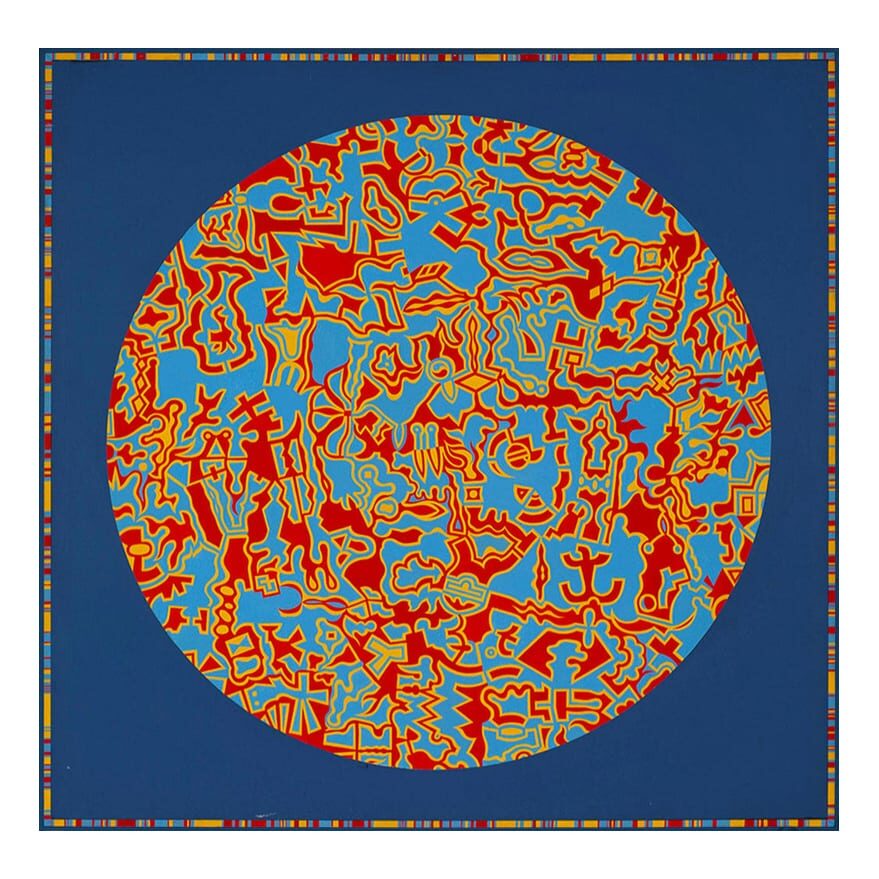
ALUN LEACH-JONES NOUMEMON BLUE IKON IN ‘PUBLIC WORKS’ BRONWYN WATSON IN ‘THE AUSTRALIAN’
Alun Leach-Jones, Noumenon XI blue ikon, 1967. Collection Benalla Art Gallery, Victoria. Gift of the Benalla Apex Club, 1967. The work can be viewed online at https://benallaartgallery.com.au/benallacollection/collection-view/1052789/ When Alun Leach-Jones, at the age of 23, decided to leave England, it was because, he said, he was feeling “hemmed in”. He was also keen to escape…
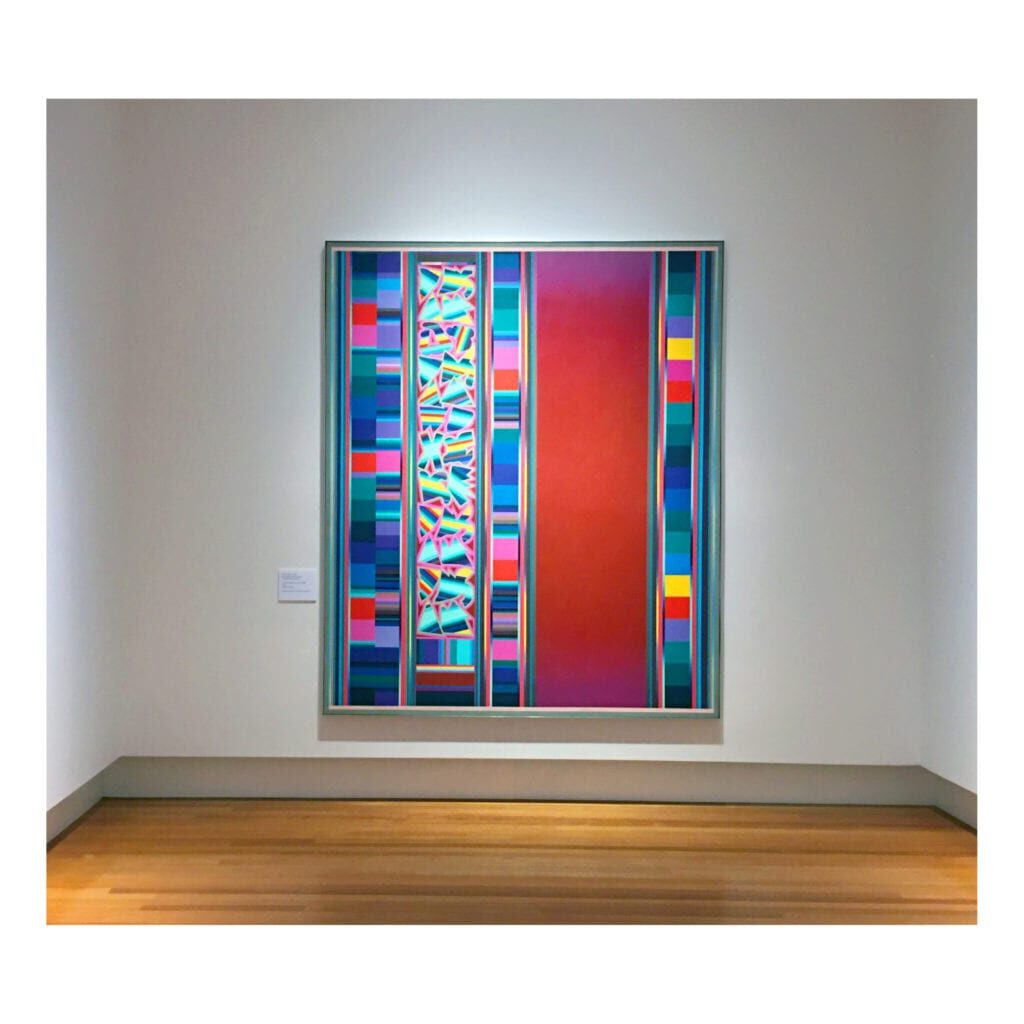
ALUN LEACH-JONES BY NICHOLAS THOMPSON IN CATALOGUE FOR ‘THE PAUL GUEST COLLECTION’ AT BENDIGO ART GALLERY
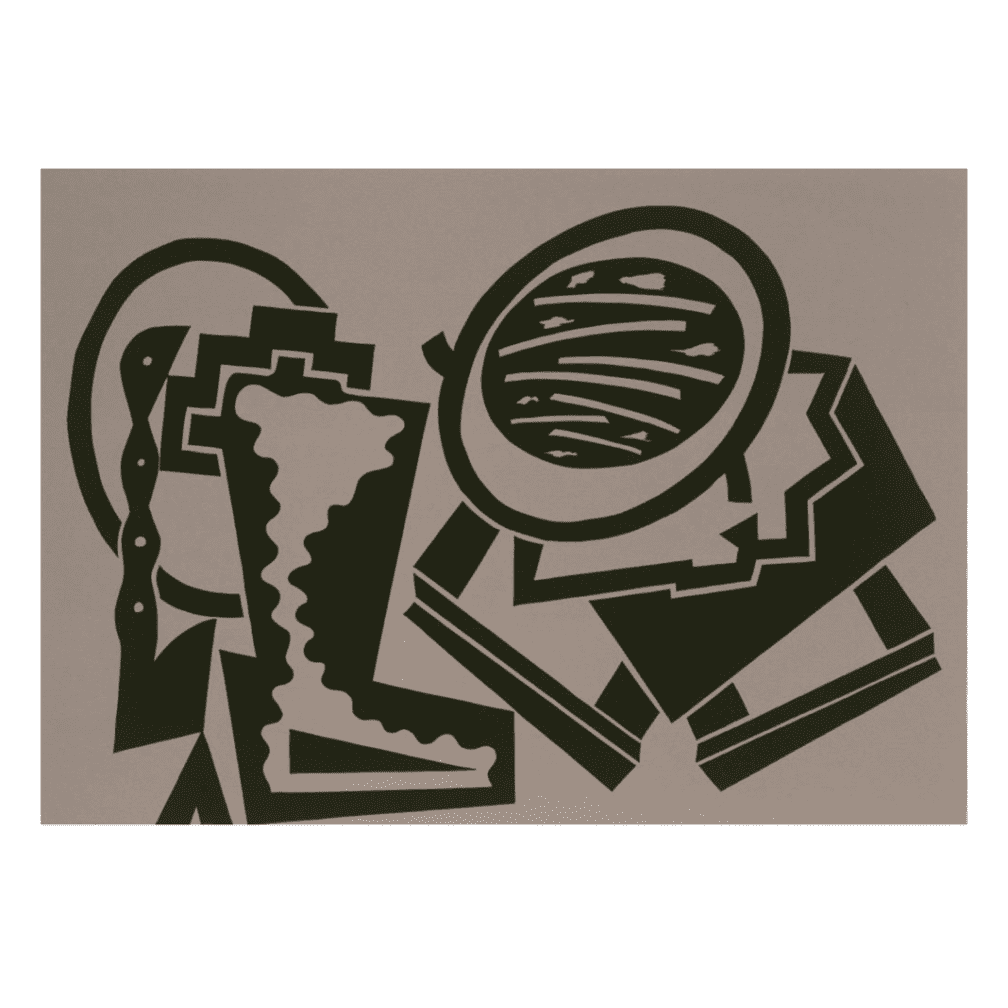
ALUN LEACH-JONES POSTHUMOUS RECIPIENT OF AUSTRALIAN PRINT WORKSHOP GEORGE COLLIE MEMORIAL AWARD 2019
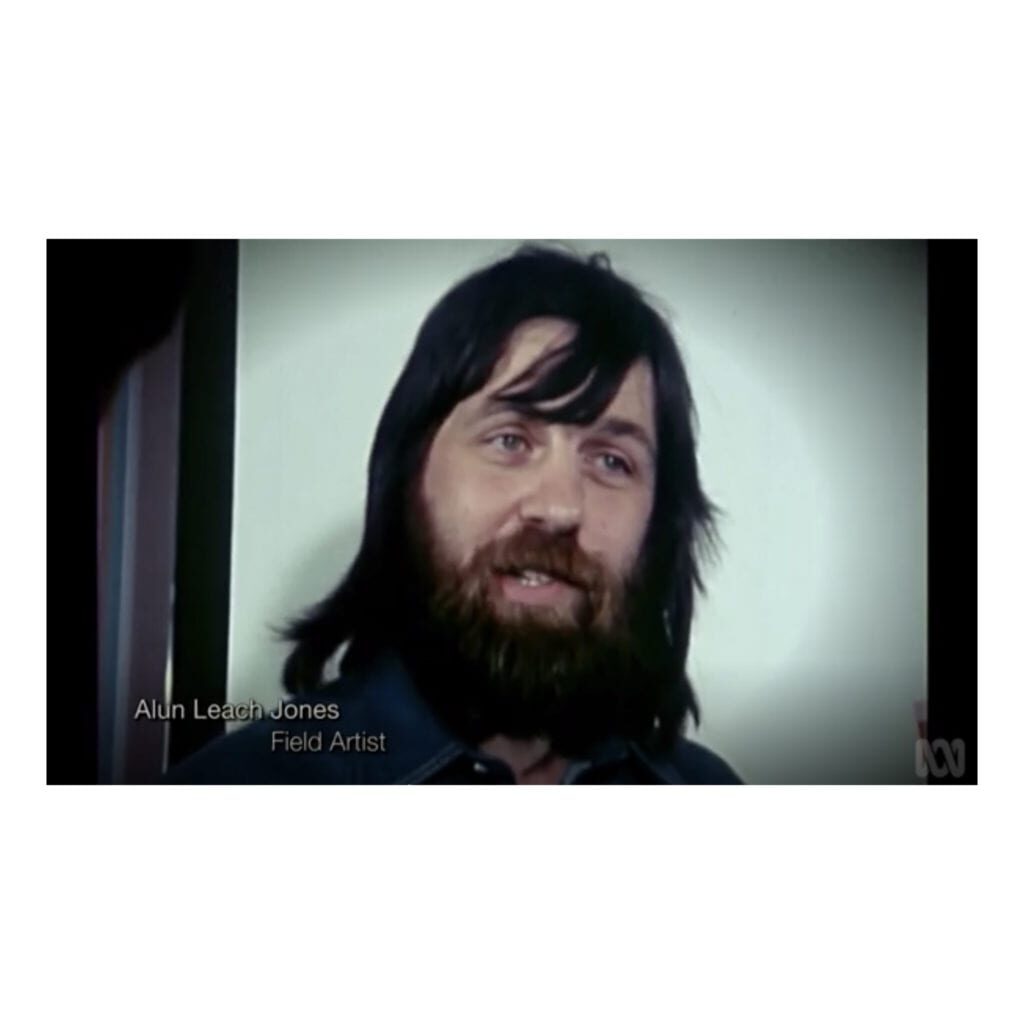
ALUN LEACH-JONES FEATURED IN ABC TV’S ‘FINDING THE FIELD’ DOCUMENTARY ON THE NGV’S ‘THE FIELD REVISITED’ EXHIBITION
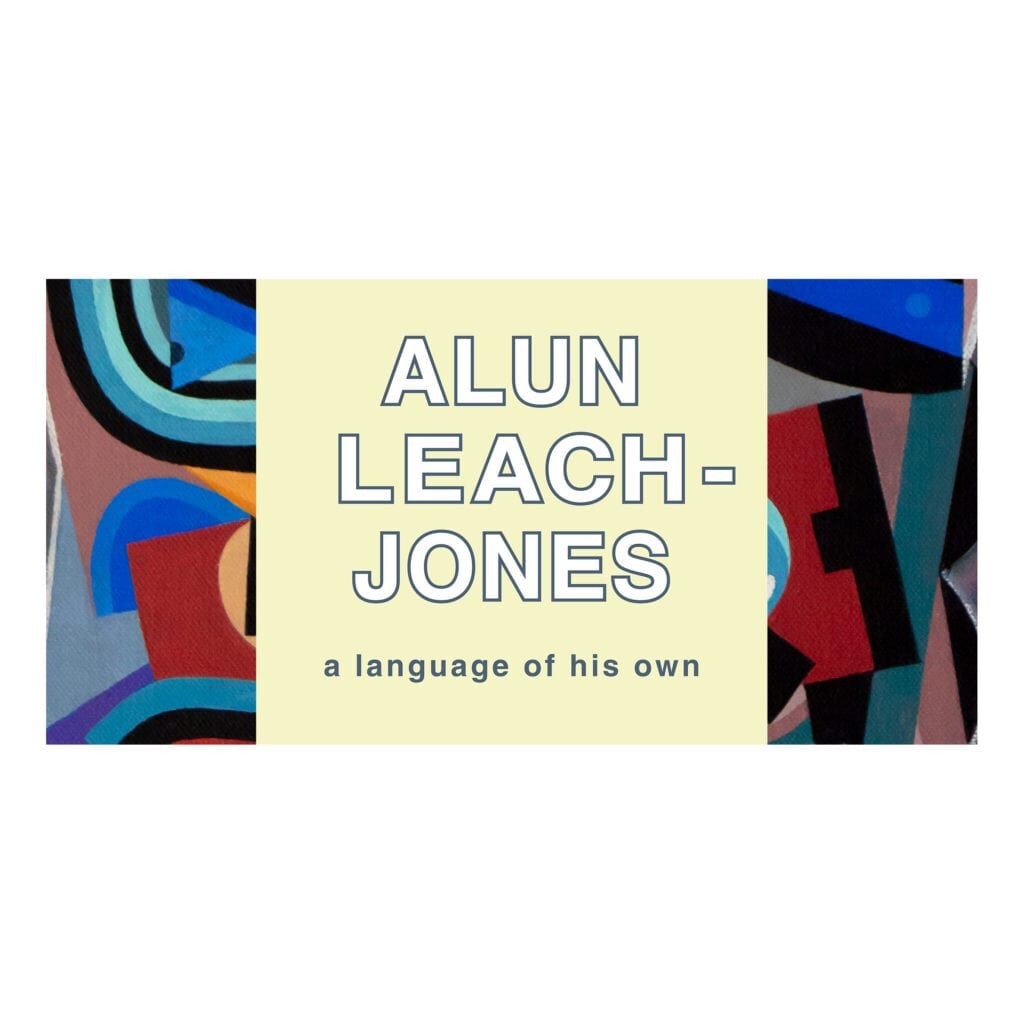
ALUN LEACH-JONES MEMORIAL EXHIBITION AT UNSW MAIN LIBRARY UNTIL 19 SEPTEMBER
Memorial exhibition ‘Alun Leach-Jones: A language of his own’ at UNSW Main Library current to 19 September . Alun Leach-Jones (1937 – 2017) was one of Australia’s preeminent abstract artists. He is recognised as being a signifiant teacher and mentor to young Australian artists and for almost two decades he lectured at the College of…
